
Sarah Brown (2016 – 2017)
The Changing Patient Experience in the Digital Health Era
Mentor: John Silvester
Year: Junior
Major: Human Biology and Society, Entrepreneurship Minor
My research will survey the healthcare experience from the perspective of a college aged consumer and propose new strategies to digitize healthcare. The goal would be to propose a thoughtful and creative answer to the question of how the internet and modern technology can improve the healthcare experience for young consumers and potentially make it cheaper and more effective.
Results: Sarah Brown’s Quad Chart

Jeremy Giampaoli (2016 – 2017)
Brain-Computer Interfaces for the Control of Physical Technologies
Mentor: Roy Doumani
Year: Junior
Major: Mechanical Engineering, Conservation Biology Minor
I propose that Brain-Computer Interfaces can be used to control drones and other technologies, which have a potentially life-saving impact on military operations and medical fields, as well as providing technological accessibility for working-class citizens.
Results: Jeremy Giampaoli’s Quad Chart

Michael Ho (2016 – 2017)
Virtual Reality in the fine arts
Mentor: Jayathi Murthy
Major: Fine Arts and Design and Media Arts
With the growing presence of virtual reality in the dissemination of online visual culture, I seek to introduce fine arts into a virtual space, delivered through the internet where it can be easily consumed/experienced by the public.
Results: Michael Ho’s Quad Chart

Ashley Hoffman (2016 – 2017)
Filter Bubbles
Mentor: Jean-François Blanchette
Year: Junior
Major: Computer Science, Art History Minor
I want to research how young people can reconnect and “catch up” with the common popular knowledge and cultures of older generations. I believe that the exponential technological advancements have exaggerated age differences, and I want to create something to allow young people to find things besides what is happening right now and connect with the past.
Results: Ashley Hoffman’s Quad Chart

Kuan (Vic) Hsuan Yeh (2016 – 2017)
Keystroke Dynamics using Neural Network Techniques
Mentor: Venky Harinarayan
Year: Senior
Major: Computer Science and Physics
My goal is to propose a new technique to distinguish the imposter from the real user through keystroke dynamics using neural network and isomorphic techniques.
Results: Kuan Hsuan Yeh’s Quad Chart

Ryou Kato (2016 – 2017)
Live Virtual Reality Streaming
Mentor: Leonard Kleinrock
Year: Senior
Major: Mechanical Engineering
I would like to propose Live Virtual-Reality Streaming, or LVRing for short (pronounced Levering, like the street near UCLA). With LVRing, footage from a camera will be streamed to a virtual-reality (VR) headset through the Internet in real-time allowing the VR user not only to view footage but to also interact with the environment to a higher degree.
Results: Ryou Kato’s Quad Chart

David Gary Khachatrian (2016 – 2017)
Investigating whether primary sequence parameters can predict protein function
Mentor: Safiya Noble
Year: Senior
Major: Bioengineering
Results: David Khachatrian’s Quad Chart

Cheechee Lin (2016 – 2017)
Designing the M-Commerce Shopping Experience
Mentor: Michael Silton
Year: Senior
Major: Communication Studies
I’m interested in evaluating the current structure for fashion m-commerce platforms (both mobile app and mobile browser) and how it influences a (millennial) consumer’s decision making process (to buy vs. simply browse).
Results: Cheechee Lin’s Quad Chart

Wan Di Liu (2016 – 2017)
Researched affective computing for an online therapy artificial intelligence that analyzes human sentiment
Mentor: Eric Haseltine
Year: Sophomore
Major: Linguistics and Computer Science

Niyati Patel (2016 – 2017)
Mentor: Ellen Levy
Year: Senior
Major: Economics and Human Biology and Society
I will conduct research on how the Internet of Things and Big Data (particularly, its use in the “Smart Cities” movement) will impact existing public infrastructure, workforce development (job creation/loss & training), and civic engagement in urban environments, focusing on Los Angeles as a case study.

Shanmukha Srinivas (2016 – 2017)
Computer Lab Education in Under-Resourced Squatter Communities
Mentor: Amit Sahai
Year: Senior
Major: Psychobiology, Global Health Minor
I propose introduction of a computer lab and internet to Maclovio Rojas, an underserved, squatter community located south of the Mexican border. The computer lab aims to improve English proficiency and literacy, health education awareness, and telecommunication between Maclovio and health professionals in both Tijuana and the United States.
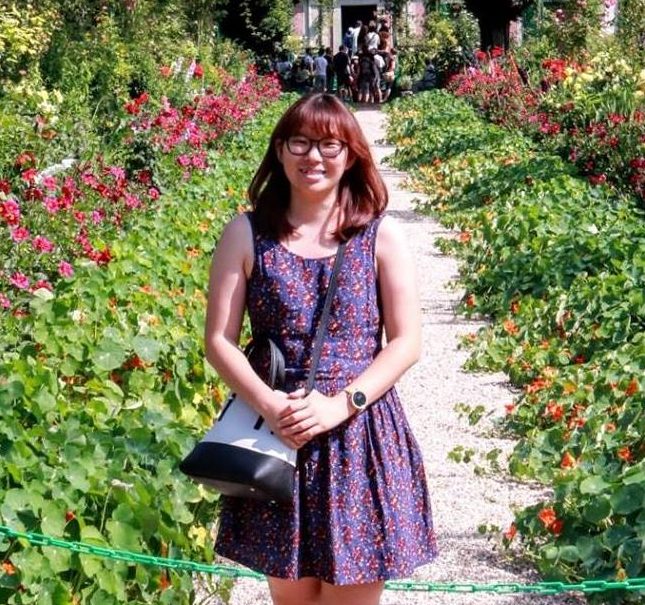
Annita Kuo (2016 – 2017)
Real-Time Visual Feedback for Mandarine Tone Acquisition
Mentor: Johanna Drucker
Year: Senior
Major: Linguistics and Computer Science
I propose researching how to develop a new language learning tool that provides visual feedback to language learners using frequency analysis. By displaying a visual representation of what a target sentence or word looks like, the learner could better match tones displayed and learn tonal languages more effectively.
Results: Annita Kuo’s Quad Chart

Oluwatomi Balogun (2017 – 2018)
Auditing Attention: The Correlation between Social Media Usage and Attention Span
Mentor: Bran Ferren
Year: Senior
Major: Communications
This research project investigates the impact of social media usage on attention span. The research aims to elucidate the following concepts: the effects of digital media on cognitive functioning, the differences and similarities between the individual yet interdependent dimensions of attention, and the merits and perils of social media and living in a digital society. The project’s methods include running a correlational study that explores the relationship between a subject’s social media use (measured as a unit in time in hours) and their score on a corroborated test of attention with high construct validity. The final product of this research will be a paper outlining the study and its implications.
Results: Oluwatomi Balogun’s Quad Chart
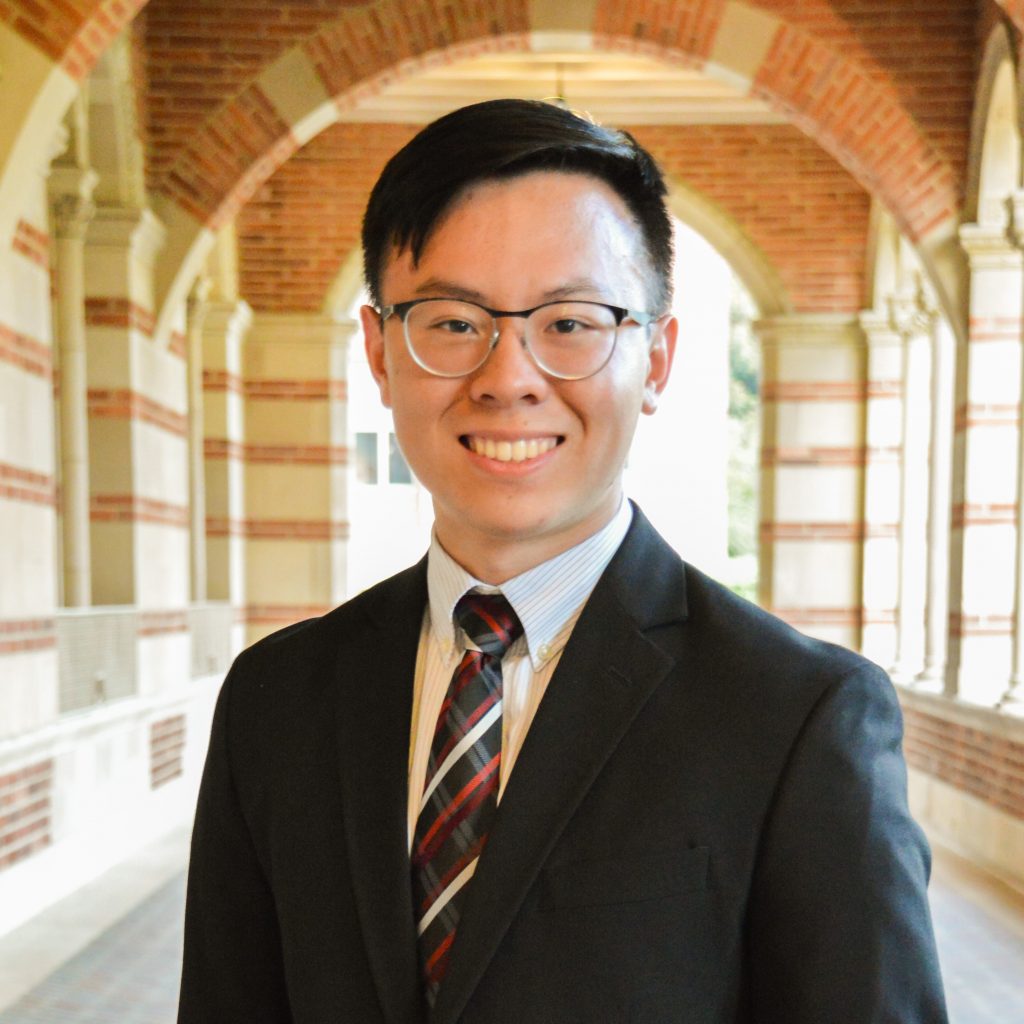
Alexander Chen (2017 – 2018)
The Applicability of Deep Learning in the Diagnosis of Stroke
Mentor: Michael Silton
Year: Sophomore
Major: Computational and Systems Biology, Bioinformatics Minor
Stroke is a serious issue across the world, leading to disability or death. Annually 15,000,000 people suffer from stroke, 5,000,000 of which become disabled and 5,000,000 of which die. My research attempts to alleviate some of this harm by enhancing the stroke diagnosis process using machine learning on MRI. The project includes the binary “stroke” or “no stroke” classification of MRI data, and extraction of useful information from MRI data to develop AI software to diagnose stroke from the raw MRI data. This will promote a more effective selection of treatment for patients.
Results: Alexander Chen’s Quad Chart
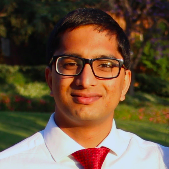
Abineet Das Sharma (2017 – 2018)
Flying a Drone Reliably over the Internet
Mentor: Leonard Kleinrock
Year: Senior
Major: Computer Science
Drones today primarily fly over radio telemetry. My goal is to completely migrate the telemetry, as well as video streaming and processing, to the ground station over the Internet. My research goal is to attempt to prove that drones can fly over the internet, and handle themselves reliably when out there is a loss of connection. The drone would connect to the internet and communicate with a ground station over it, and hopefully be smart enough to handle situations where it loses connection temporarily.
Results: Abineet Das Sharma’s Quad Chart
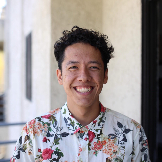
Canaan Howard (2017 – 2018)
Augmented and Virtual Reality Technology in Healthcare
Mentor: Roy Doumani
Year: Senior
Major: Psychobiology
This project’s focus for the year will be exploring the potential applications of virtual and augmented reality in the healthcare space, primarily investigating how these technologies could be used to improve both caregiver and patient experience. Research includes interviews with healthcare technologists and practitioners, and reviews of existing healthcare technologies to discover a space where it would be practical to use AR or VR without trying to simply use the technology for the sake of using it. The final deliverable will build from the previous quarters’ research to develop some simple prototypes of software that could have applications in healthcare that could be improved upon in the future.
Results: HowardDemo, Canaan Howard’s Quad Chart
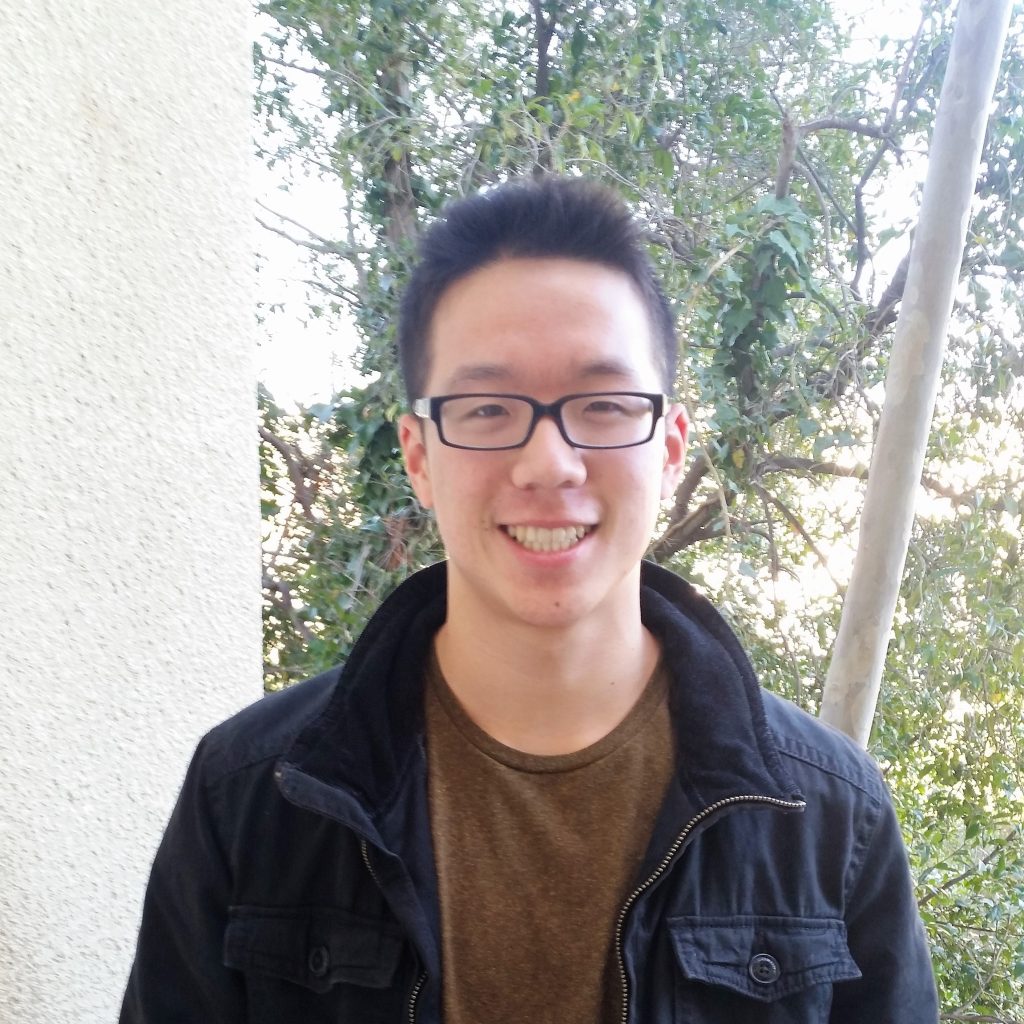
Howard Huang (2017 – 2018)
Use of Machine Learning to Detect Fake News
Mentor: Venky Harinarayan
Year: Senior
Major: Computer Science
I am researching the applications of machine learning in digital journalism. The idea is to apply current techniques and research in machine learning and deep learning to find if there can be a way to automate the fact checking process. Although this is a long running problem that is already being researched, I hope to take a different perspective on tackling fake news by looking at it from a new perspective. One of the research goals is to create a tool that newsroom can use to help streamline copy editing process.
Results: HuangDemo, Howard Huang’s Quad Chart

Zoe Ingram (2017 – 2018)
Speech to Shape Tool: Voice-Activated Technologies for Accessible Design
Mentor: Johanna Drucker
Year: Senior
Major: Design & Media Arts
About 15% of the world’s population has a disability. One would assume that the internet would enhance opportunities for disabled people, however, most technology is developed without the needs of the disabled in mind, with the result that disabled people are far less engaged with the internet than the general population. To critically engage the design issues surrounding this problem, I am building a speech activated drawing and design application that runs in the browser. This application will be built on the foundation of accessibility. The software will be designed for users who, due to congenital, disease, or injury-related disabilities, are unable to use traditional digital hardware like a mouse and keyboard. Users who do not have the time or ability to master complex software like Adobe Photoshop or Illustrator will also benefit from the simplicity of this application. By removing the human dependencies present in current visual creation software, I am able to build my application with just one human requirement: speech. By using simple phrases to illustrate shapes, colors and lines, users will be able to take the intuitive control of drawing with a pencil and combine it with the convenience of working digitally.
Results: IngramDemo, Zoe Ingram’s Quad Chart

Devin Johnson (2017 – 2018)
Erotic Labor on the Internet
Mentor: Ninez Ponce
Year: Senior
Major: Design & Media Arts
Just as many have over-optimistically written about the Internet’s radical potential for social liberation, academics who have researched Internet sex work have also given the Internet too much credit for providing affordances for sex workers as a supposedly “democratizing” force. Through my research, I would like to provide a more critical lens for understanding how the digital era has transformed sex work. I will illuminate the experiences of those most vulnerable to exploitative power structures, and how computer mediated communication and the online marketplace can reinforce the oppression of poor, queer, and disabled sex workers, and sex workers of color. I will also investigate methods in which the internet and new media technologies can truly be employed to facilitate safer conditions for marginalized peoples to engage in sex work, labor unionization, art making, intimacy, and gender performances online in non-exploitative and beneficial ways.
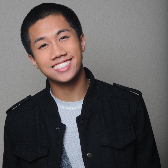
David Nguyen (2017 – 2018)
Evaluating Community College to PhD Association’s Internet-Mediated Interventions
Mentor: Amit Sahai
Year: Senior
Major: Sociology
I am implementing and conducting evaluation research of the pilot program: Community College to PhD (CC2PhD) Scholars Programs. The program’s goal is to diversify the professoriate by preparing community college transfer students for doctoral studies. My IRI research investigates the potential of internet-mediated interventions to improve the community college to PhD process. I look to understand program participants’ perceptions of the efficacy and self-reported use behavior of the CC2PhD Scholars Program’s internet mediated interventions: videoconference e-mentoring, private Facebook group as an online community of practice, and lecturecasts of CC2PhD Saturday Academies.
Results: David Nguyen’s Quad Chart
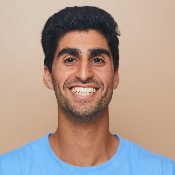
Parsa Rezvani (2017 – 2018)
Tutorfly’s Sustainable Peer Tutoring in Low Income Communities
Mentor: Jayathi Murthy
Year: Senior
Major: Economics, Entrepreneurship Minor
Tutorfly.org is a peer to peer tutoring model platform that pairs high school student tutors with younger students at the same school needing tutoring. The goal is to create a tutoring model that is more efficient and cost efficient as well. We have performed some tests with our alpha launch to better understand the market in more affluent neighborhoods in the Bay Area and Los Angeles. The IRI project extends upon previous research to investigate the effectiveness of peer-to-peer tutoring in lower income communities.
Results: Parsa Rezvani_#4 Final Presentation
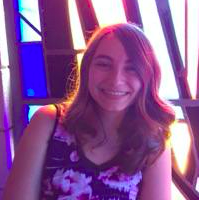
Sydney Richter (2017 – 2018)
Hyperfocus: An ADD/ADHD Application
Mentor: Krisztina “Z” Holly
Year: Junior
Major: Applied Linguistics
My research project focuses on building a computer application that will benefit students with ADD or ADHD with their studying. People who have ADD/ADHD struggle to concentrate and complete anything from menial tasks to academic projects. This stems from several factors, including, but not limited to swayed sense of time, inability to block out external inputs, and lack of stimulation from the part of the brain that promotes focus. However, when someone who has ADD/ADHD finds something that they enjoy or are passionate about, they are able to hyperfocus. My project aims to tap into this ability to hyperfocus by creating an app that turns school material into a format that will make learning enjoyable and more efficient.
Results: Sydney Richter’s Quad Chart
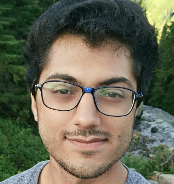
Avirudh Theraja (2017 – 2018)
Extraction of Software Metadata from Scientific Publications
Mentor: Eric Haseltine
Year: Senior
Major: Computer Science
My project aims to solve a problem faced by a lot of academic researchers in Bioinformatics and Computer science. The goal is to build a high quality web service which allows researches to search for all sorts of open source software published in articles in prestigious journals in the academia world. This software data will be collected by writing a robust backend and data pipeline which extracts high quality metadata from the articles. The end result is a web application which allows fast searching and relevant information of the vast number of new and exciting open source software which is published frequently in all sorts of journals such as Bioinformatics, Nature, BMC Bioinformatics etc.
Results: Avirudh Theraja’s Quad Chart
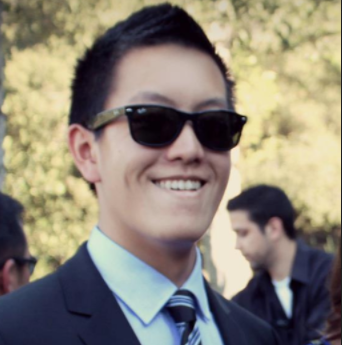
David Zhu (2017 – 2018)
Project: Blockchain technologies for the future of finance
Mentor: Lilian Coral
Year: Senior
Major: Philosophy
Bitcoin is revolutionizing the way the world sees money, utilizing the instant transactions that can be sent from one side of the world to another, without the need for any third party exchange such as a bank or Foreign Exchange. However, the real ingenuity behind this is Blockchain technology, which is an unalterable public database accessible by anyone with Internet connection. Currently, the technology is in its infancy, and its real world applications for businesses and consumers have not been realized in the market yet. Many established large corporations as well as startup tech companies are jumping on this chance to incorporate Blockchain technology into their every day operations. I am researching user-friendly financial applications for this groundbreaking technology.
Results: David Zhu’s Quad Chart
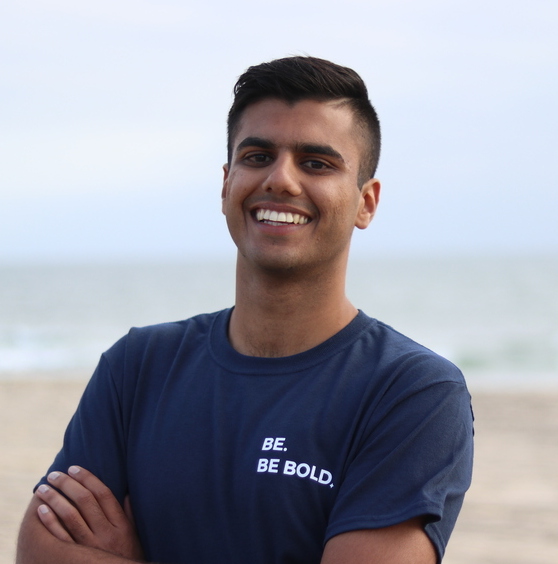
Anshul Aggarwal (2018 – 2019)
Nettd: Mapping Your Personal IRL Social Network
Mentor: Venky Harinarayan
Year: Senior
Major: Computer Science and Engineering
Digital social networks are well mapped-out, yet little has been done to map personal interactions – interactions that carry more emotional weight in an individual’s life. This project aims to create and design a living, viewable, and personal social network graph based on the quality and quantity of a user’s daily, real life interactions. We capture this data through a mobile application with GPS tracking and analyze all interactions with other users: everything from passing by on the street to spending hours talking. Using our server, we calculate the length and weight of the interaction, and update the social graph for the user to view from the app or online. Using this information, a user can better dictate how they spend their time and who they spend it with.
Results: Anshul Aggarwal’s quad chart

Miguel Gutierrez (2018 – 2019)
Design & Power: How Information Architecture Reifies Information Asymmetries
Mentor: Lilian Coral
Year: Senior
Major: Art History
Donald Rumsfeld once convolutedly explained that “there are known knowns…unknown knowns…and unknown unknowns,” and in the advent of an algorithmic culture and data capture, there are perhaps more “unknown unknowns” than we as users or the outfits who employ these methodologies would like to admit. Critical algorithm studies have looked closely at what algorithms are, what they are doing, and what are their “real-world” consequences are, but the focus on a subject in the context of information architecture has been widely overlooked. The interface, as a site of a subject’s relationship to system affordances, is perhaps why there are as many “unknown knowns” and “unknown unknowns” as there are. If the interface itself was to be the locus of analysis, we will have to look critically at their design. In my project, I would first like to write a research essay that focuses will be on how information architecture itself has the power to give visibility and to silence, reinforce the information asymmetry between subjects and proprietary outfits/government actors, and limits subject agency in the context of civic participation. I would like to accompany this research-based essay with a proposal for a platform redesign that fixes the issues my essay points out. This proposal will include empirical research with stakeholders, developed personas, and wireframes that will eventually lead to a prototype.
Results: Miguel Gutierrez’ quad chart
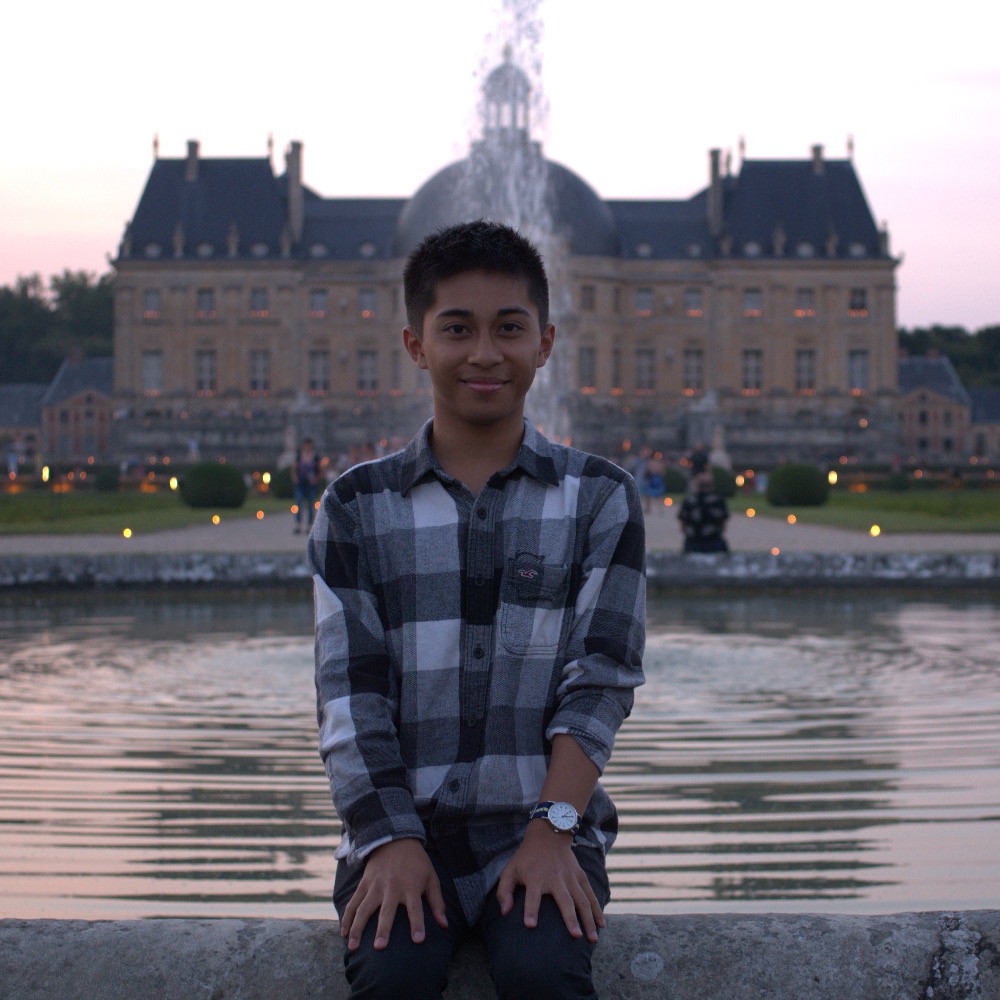
Angelo Mendoza (2018 – 2019)
Personal Budget Application for Low-Income Households
Mentor: Ninez Ponce
Year: Junior
Major: Political Science
Many low-income households do not keep a detailed budget. This is a problem since not properly tracking expenses can lead to overspending. Overspending is especially a problem in low-income households as it can lead to excessive credit card debt or the reliance on payday loans to make up the difference between paychecks. My proposed project is the creation of an affordable personal budget application that is also simple to use. Low-income households that can’t afford expensive budget applications and individuals that do not have very much spare time to spend creating detailed budgets will bnd this software useful. Creating a budget will allow households to know where exactly their income is going to and will help them manage their spending more easily. This project will be unique as many other budgeting software are expensive with some costing almost $100/year. Also, currently existing budgeting software can be difficult and time-consuming to use. The successful completion of this project will result in personal budgeting software being more accessible to low-income households and more.
Results: Angelo Mendoza’s quad chart

Liam Monninger (2018 – 2019)
Twitter Finger: Tweets as Commitment Devices in Modern Diplomacy
Mentor: Sarah Roberts
Year: Junior
Major: Political Science
The era of the social media politician challenges many of the established norms of political discourse. Nowhere is this more true than in the realm of international relations, wherein the calculus of diplomatic discourse has been inundated by heads of states firing off tweets from armchairs. To understand the effects of this shift, this paper zeroes in on the medium of Twitter and seeks to gauge the viability of the tweet as a commitment device. To gauge said viability, this paper performs qualitative case by case analysis of the effects of tweets on various regimes and performs a quantitative analysis of the effects of tweets on domestic and foreign audiences. The intent of this project is to further the understanding of Twitter as an instrument of politics in the 21st century.
Results: Liam Monninger’s Quad Chart
Results: Liam Monninger’s Report
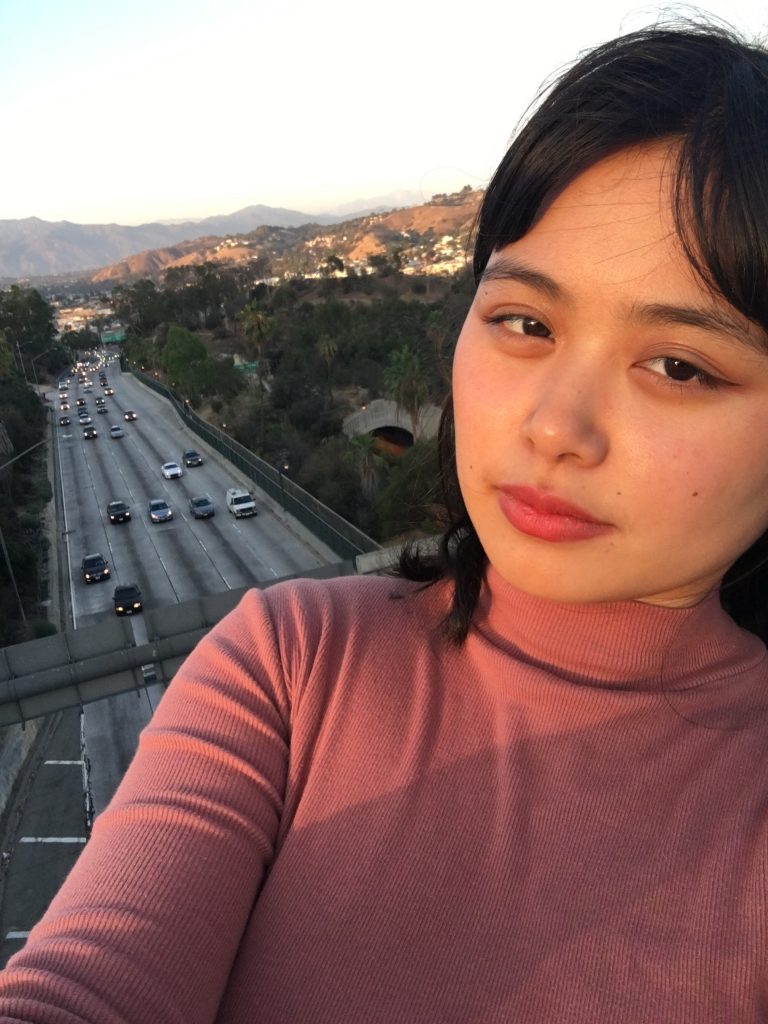
Elizabeth Nakamura (2018 – 2019)
Machine Ethics and the Problematics of Deepfake
Mentor: Lauren McCarthy
Year: Senior
Major: Art History, Digital Humanities
Deepfake is a technique that employs machine learning and deep neural networks to produce realistically manipulated faceswap videos. In late 2017, Deepfake gained prominence on Reddit as a means of proliferating fake celebrity pornography. Because of the technology’s accessibility, anonymous users, using external imagery gathered from videos and images, easily superimposed the faces of Hollywood actresses onto the faces of porn stars. While Deepfake is not sophisticated enough to bridge the uncanny valley, these videos are realistic enough to raise moral concerns, forcing us to contend with our vulnerability to misinformation in today’s info-driven society. Deepfake serves as an epistemic provocation that challenges current understandings of machine ethics. Using Deepfake as a starting point, I want to point out the risks our society collectively risks if technocrats fail to establish an effective AI moral code. Furthermore, I seek to combat the perpetuation of misogynistic power structures in the digital age by addressing issues of consent, sexual objectification, and labor abuse in pornography and its impacts on human interaction. In my research I hope to address Deepfake from an interdisciplinary perspective, analyzing both its sociopolitical and technological implications.

Devin Reeh (2018 – 2019)
Failure to Adopt – Big Data, Machine Learning, & IoT
Mentor: Rajit Gadh
Year: Senior
Major: Statistics, Bioinformatics
Big data, machine learning, and the internet of things have and will continue to fundamentally change how our society functions over the next twenty years. Currently, a small portion of companies have had massive integrations of such technologies, whereas a vast majority have had minor implementations or none at all. This project will investigate how the spectrum of adoption and, and more importantly, how the lack of adoption, have affected businesses and the middle class workforce in developed markets. Furthermore, “Failure to Adopt” will examine how the teachings of these instances can be applied to lagging firms and whether their technological adaptation has the momentum to prevent economic stagnation of middle class individuals.
Results: Devin Reeh’s Quad Chart

Nephele Troullinos (2018 – 2019)
Agency through Virtual Sociality: Social Media in Critical Media Literacy Curricula
Mentor: Miriam Posner
Year: Senior
Major: Fine Art
This research will aim to uncover the potential of social media to create personal agency in young students, through a pointed focus on social media within a media literacy program. The question at the core of this research will be: As social media lies at the intersection of information gain and sociality, how could the intentional use of social media increase cognizance and political engagement in youth? The United States education system and its primary school students will be at the focus of this research. America’s youngest generations have now been dubbed ‘digital natives’ for their presumed digital literacy. Concurrently, widespread moral panic about the detrimental effects of technology on an impressionable population, largely from older generations of ‘digital immigrants,’ has discredited the constructive potential of a high-networked future populace. Such potential, however, may only begin to be uncovered when emerging social media studies and theory becomes integrated into primary education programs. Looking to scholarship and case studies on the intersection of digital media and education, this project hopes to propose a model social media studies program. A curriculum that guides students through the historical evolution, and societal and psychological implications of social media platforms, may allow students to unpack its informative and empowering potential.
Results: Nephele Troullinos’ Quad Chart

Adam Weiner (2018 – 2019)
Identification of emerging flu strains and subsequent vaccine analysis
Mentor: Michael Silton
Year: Senior
Major: Bioengineering
Each year, the flu virus hinders the lives of millions of people across the globe. Despite the yearly release of vaccines, there are thousands of flu related deaths andmany more hospitalizations per year. If we can develop vaccines which better target emerging flu strains and have more people get vaccinated, we can reduce the dangers of flu season each year. The goal of this project is to tackle both of these issues through providing high level virus and vaccine analysis that is publicly available and interpretable. I plan on using influenza H3N2 hemagglutinin sequencing data paired with machine learning methods to identify emerging flu strains and evaluate how well each year’s vaccine protects individuals against these emerging strains. Once I have completed my analysis pipeline, I will perform critical analysis of flu vaccine from different years to track the improvement of the flu vaccine over time. Lastly, I will develop a website that continually identifies emerging flu strains and evaluates vaccines by analyzing the sequencing data as it is released, providing health officials with valuable information about circulating flu strains and shedding light on vaccine development to the general public.
Results: Adam Weiner Quad Chart
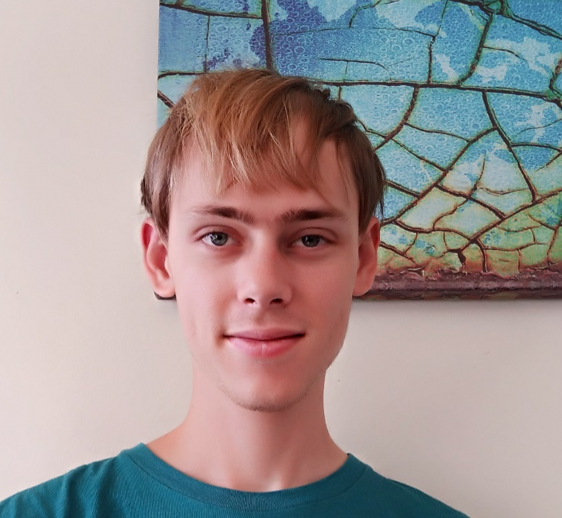
William Whitehead (2018 – 2019)
Pixel-Wise Semantic Image Segmentation With Variable Pixel Density
Mentor: Jeff Burke
Year: Junior
Major: Electrical Engineering
Each pixel in an image represents a part of some object. Semantic segmentation figures out what each pixel in an image belongs to and gives it a corresponding label. Currently, the best segmentation algorithms are Fully Convolutional Networks (FCNs), a type of artificial neural network that outputs an entire image segmentation at once. While these networks often get good results, they have trouble precisely identifying smaller objects and edges. I want to investigate ways of warping images around focus pixels to help the neural network identify where the border of an object is. This idea draws inspiration from human vision, which has a much greater spatial resolution at the center than at the edges. However, the segmentation will have to be done pixel by pixel, which has a high computational cost. If this method does result in better segmentations, it could find immediate use in fields that desire precision at any computational cost, such as medical image analysis. However, its high computational requirements would prevent its use in real time applications such as autonomous cars. The results however may inspire better design of FCNs, which could find use in real time systems.
Results: William Whitehead’s Quad Chart
Results: Segmentation With Fovea-magnifying Warped Crops
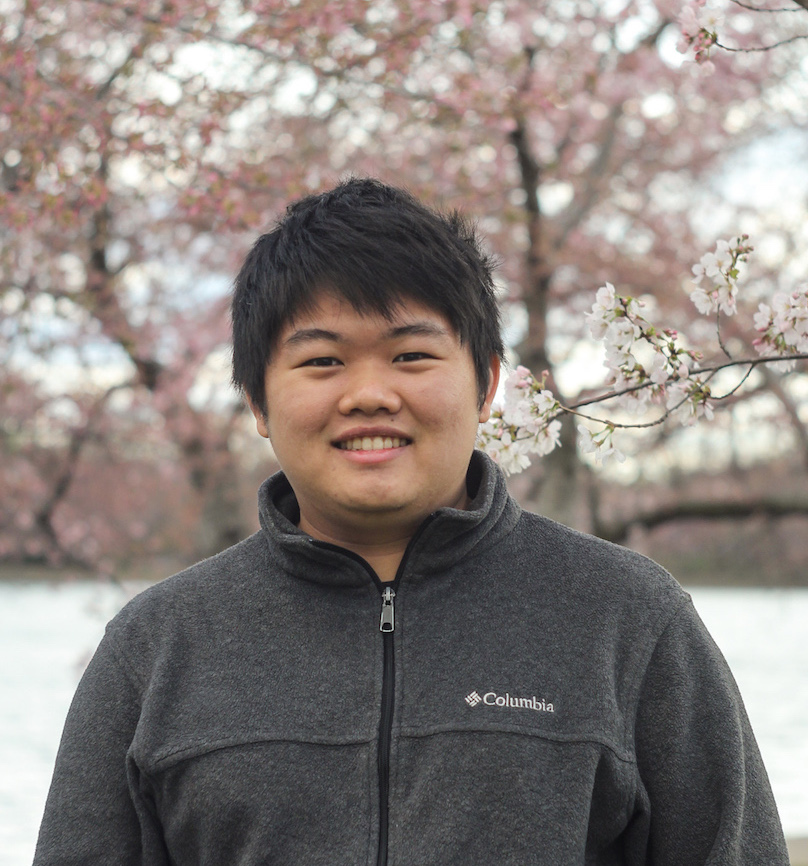
Hongyi Zhang (2018 – 2019)
Empowering the Newsroom: Tech for Local Journalism
Mentor: Jayathi Murthy
Year: Senior
Major: Computer Science
The local newspaper, once the bedrock of communities large and small all over America, is under siege. Declining ad revenue and an inability to adapt to a digital-first news environment has resulted in many struggling to stay afloat. While this is a multifaceted problem that does not present any easy solutions, one small part of the issue is that these newsrooms lack the resources and expertise to leverage modern technology and tools that other modern, well-funded news outlets utilize and thus harming their competitiveness. As I would subsequently explain, I believe local newspapers matter, and I want to help research and build easy to use open source tools that utilize modern technologies and machine intelligence from NLP to aid in the operation of small newsrooms, and help drive their engagement with local readers. The project seeks to understand the pain points and needs of these organizations, starting from campus newspapers, and then working to build a suite of open source micro-services that help to tackle problems from comments filtering to content management to social media management. These tools are currently expensive or entirely proprietary, and this project aims to make them available and help even the playing field.
Results: Hongyi Zhang’s Quad Chart
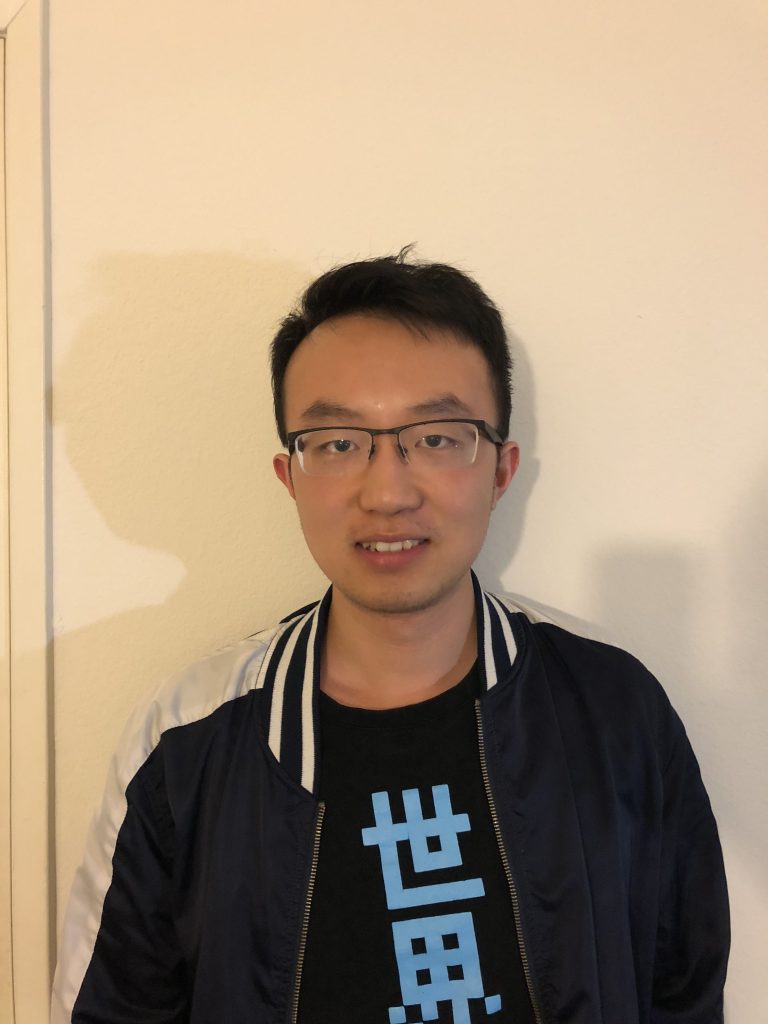
Pei Zhou (2018 – 2019)
Fairness in Online Natural Language Processing Systems
Mentor: Amit Sahai
Year: Senior
Major: Mathematics of Computation
Online Natural Language Processing (NLP) systems like sentiment analysis, language identification, and visual tagging have been used by millions of people everyday. However, reports have found that some systems like Google’s Cloud Natural Language API and IBM’s Watson Natural Language Understanding are biased and some words like “Jew” and “homosexual” are interpreted to be negative. Researchers have also found racial disparity in language identification for tweets and gender biases for image tagging. This project will investigate different kinds of biases in NLP algorithms and propose computational models to reduce biases in various applications. Specifically, the project will first find sources of biases and quantify them in major NLP systems. Then it will improve current methods in NLP for tasks like sentiment analysis so that fairness is ensured. Possible ways of improvements are imposing constraints on the training corpora, and calibration on some certain variables including gender, race, and sexuality. This project is unique because although fairness in Machine Learning (ML) is getting more attention lately, fairness in NLP is still an issue not tackled by researchers. The project will benefit all users (especially minorities) of NLP systems on the Internet, which are almost everywhere, including Twitter, Facebook, Google, etc.
Results: Pei Zhou’s Quad Chart
Results: Pei Zhou’s Report
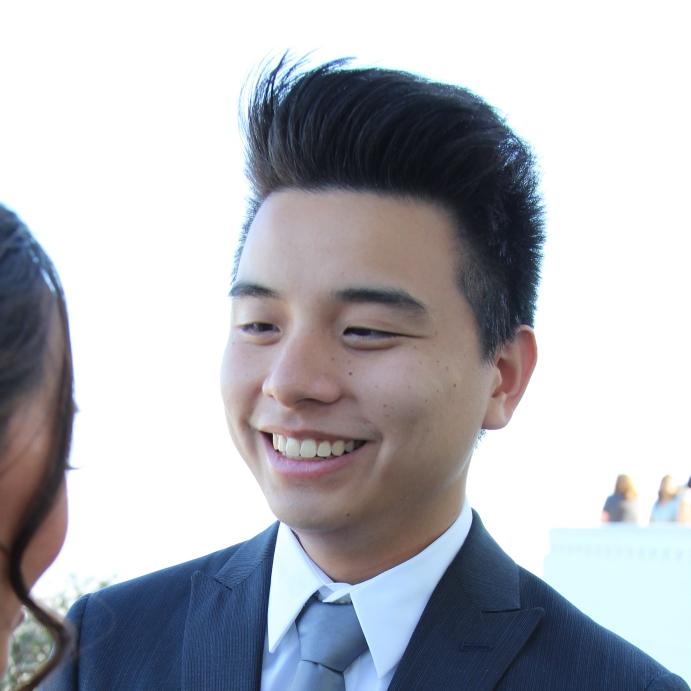
Byron Briones (2019 – 2020)
The Culture of the Online Political
Mentor: Ninez Ponce
Year: Junior
Major: Political Science, Education Studies Minor
As of now, there is no correctly informed understanding of the political culture of the modern internet, especially within the Generation Z and late millennial generation, and its ideas, memetic ways of spreading, hidden means of subtle communication, and dominant communities. This project will use ethnological and empirical methods to provide this understanding for the internet savvy of the left and right wing with a special emphasis on the right. This project is unique in that it will be analyzed by a person who is extremely familiar with the ideas and that it’s supplemented by three empirical studies. The first will identify the Reddit communities most used by both ideologies. The second will find if meme involvement and understanding is strongest by the right or left. The third will analyze interpretations of memes and correlate them with frequency of internet usage and the online communities they most use for political networking. With this, internet hosts and law enforcement can prevent domestic terrorism through deplatforming and identification of hidden memes and ideas.
Results: Byron Briones’ Quad Chart
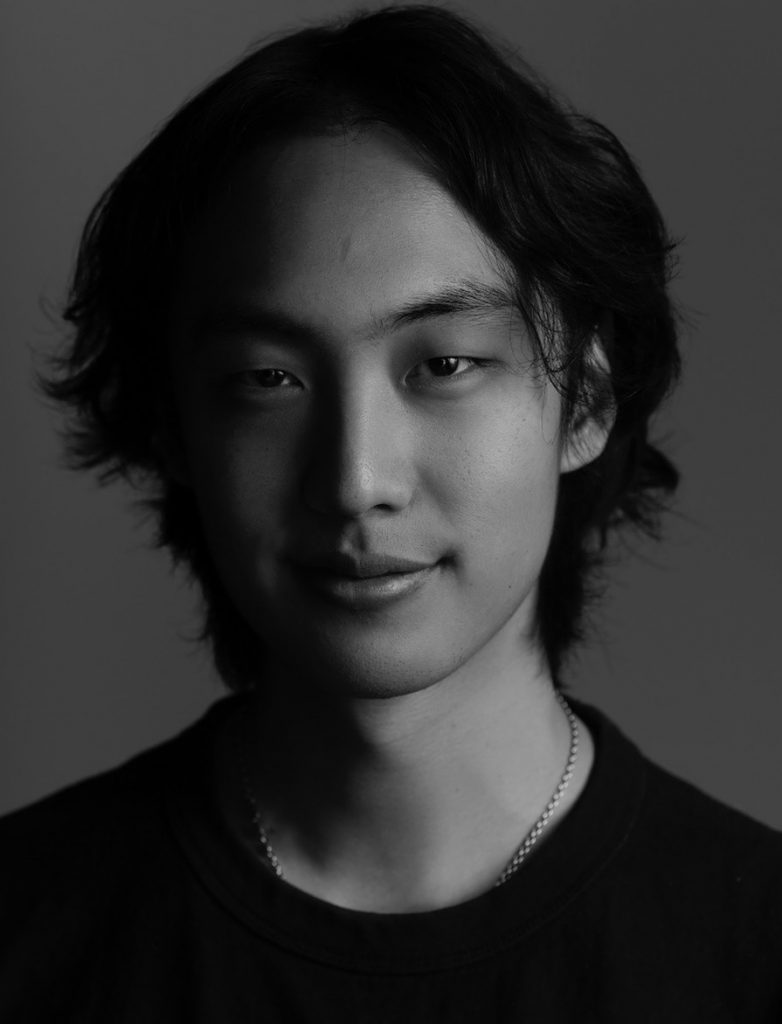
Daniel Seung Lee (2019 – 2020)
Information Canvas : Making University Research Accessible Through Generative Art
Mentor: Jayathi Murthy
Year: Junior
Major: Design & Media Arts
I am proposing a public art project which I will use the television monitors installed on
campus to showcase generated infographic artwork based on student research data.
Undergraduate students at UCLA produce an outstanding amount of thoughtful research, yet it is hard for some to communicate on the internet outside of monopolized publication journals or their personal social media. Also it is difficult for some students not well versed in computer graphics to create infographics for their work. At the same time, there is not enough opportunities for public to engage with university research outside of news media. My project’s goal is to make a web-based tool that creates generative infographic artwork based on research paper or projects students submit. I aim to filter and organize the submitted information through machine learning algorithm and generate corresponding information based visuals with set parameters. The project is unique as it uses televisions as framed canvas to give people more access to art and undergraduate research. Moreover it can empower students to create infographic visuals they can use with the project’s website. It will
also be open sourced, so the outcome of my research can benefit anyone interested in using similar approach.
Results: Daniel Seung Lee’s Quad Chart

Natasha Lum (2019 – 2020)
Putting the Globe on the Blockchain
Mentor: Leonard Kleinrock
Year: Junior
Major: Global Studies, Digital Humanities
Coined the world’s next disruptive technology after the invention of the internet, blockchain has taken the world by storm since it was introduced in 2008 as the core technology behind the cryptocurrency, Bitcoin. While it is still in its infancy, its applications as a platform for decentralized governance are believed to be wide-ranging, going far beyond the realm of digital finance and extending to the wider fields of politics, business and society. Several developed countries have recognized the potential of blockchain and have launched nation-wide initiatives to promote the adoption of blockchain technology in both the private and public sector, and a few states in the US have also replicated such efforts on a state level. Despite such advances in the technology, there is still little scholarship in the field. My project seeks to find out if there is an imperative for world leaders like the US to set a global example by launching a national strategy for blockchain through the investigation of the potential benefits and challenges of promoting and regulating blockchain technology in the private and public sector. I eventually hope to theorize a possibility of global governance by putting the world on a blockchain through its implementation in the UN. While I am not seeking to be an advocate for a national or international strategy for blockchain, I do hope that this research will encourage further scholarship in the area and inspire greater innovations in blockchain technology.
Results: Natasha Lum‘s quad chart, Natasha Lum’s presentation
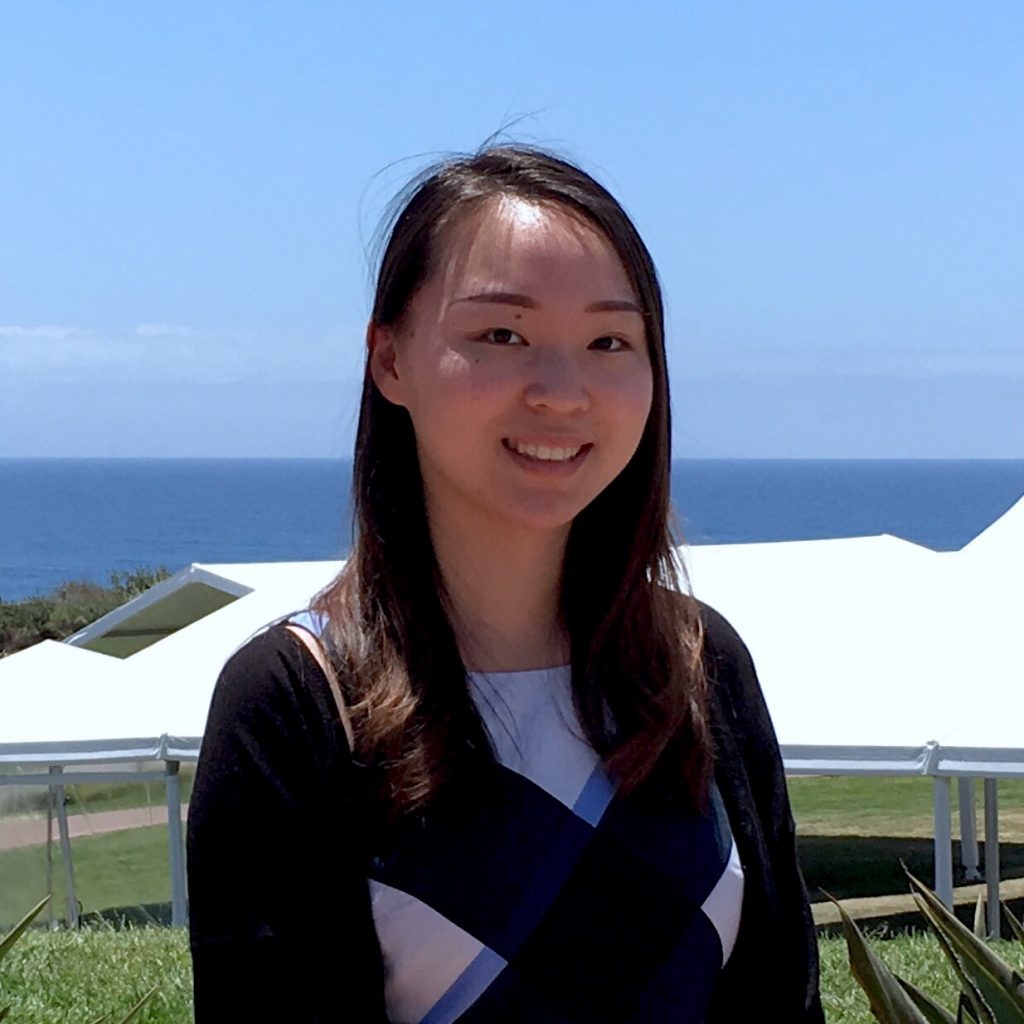
Ellen Mei (2019 – 2020)
Labor Organization and Activism in the Tech Industry
Mentor: Miriam Posner
Year: Junior
Major: Linguistics of Computer Science
Issues of diversity, equality, and ethics in tech are structural across the industry and its products. To achieve a future of ethical and equitable Internet technology and labor relations, workers from marginalized groups should be given sustainable means to self-advocate, and more privileged workers should understand and invest resources into labor activism. This project investigates the contemporary challenges, methods, and gains of labor organization and activism in the high-tech and knowledge industries, focusing on companies who primarily build and therefore promote their agenda and values via company domains on the Internet (i.e. Google, Facebook, Amazon, etc.). Through investigating labor history and conducting interviews with tech workers, the intention is to create an online learning resource for students and tech workers to understand available means of self-advocacy across labor classes and diverse identities. This project can help those who seek to positively impact tech understand ways they can promote social justice, advocate for themselves, and find community. In a time when people increasingly feel the necessity of labor solidarity and empowerment, this project seeks to gather together historical overview, laborer realities, and contemporary organizational methods for enacting change, giving tech students accessible knowledge to help advance their own goals for self-advocacy.
Results: Ellen Mei’s Quad Chart

Ethan Mitchell (2019 – 2020)
Using Connected Mobility and Disability Data for Economic Development Planning
Mentor: Lilian Coral
Year: Senior
Major: Electrical Engineering
With the recent rise of IOT devices came a rise of connected mobility devices. I am investigating the intrinsic inequalities for low-income and disabled residents that have arisen as cities began to rely on paid last-mile and other single-use transportation in their planning and economic developments. Using GeoHub DASH data and automatic traffic counters to map and track the impact of last mile transportation will allow the visualization dashboard to have both a real-time and in-depth effectiveness. Here I propose a webapp to mitigate the unintentional effects of technological bias and induced error in DASH data and bus statistics. This solution is unique because it uses data from connected mobility devices as well as the usual city data to create a full, real-time visualization of the negative impacts that connected mobility devices have on low-income and disabled residents. The visualization portal will reduce the impact that connected mobility devices have on low-income and disabled residents.
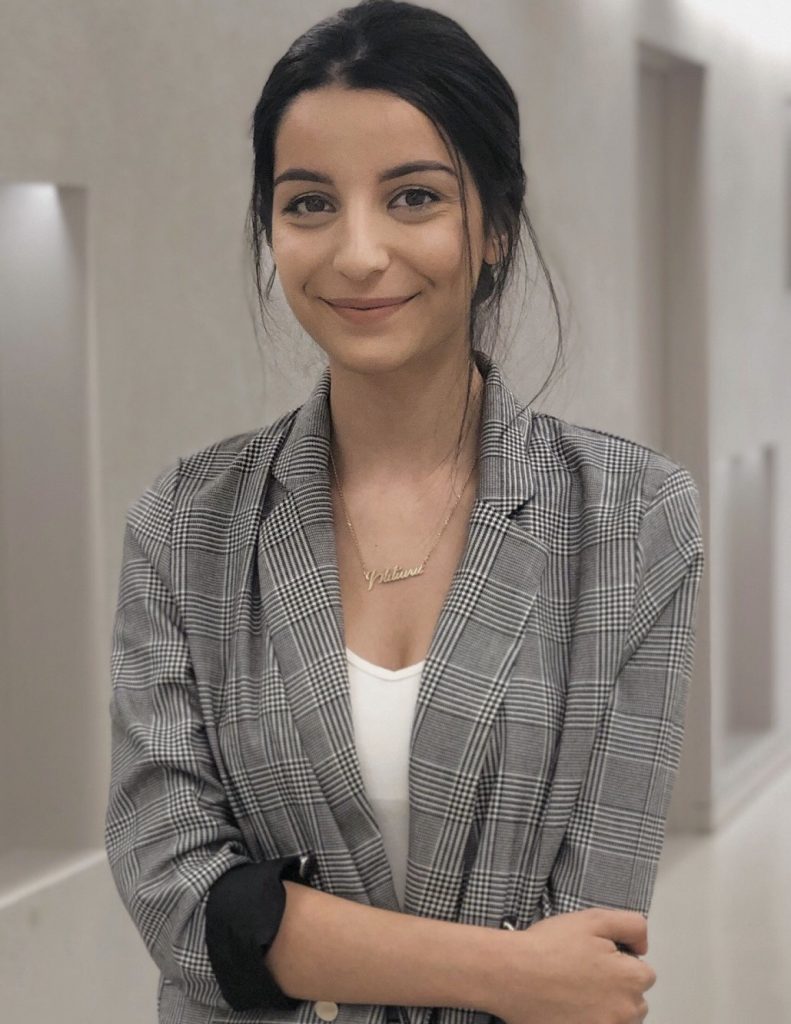
Inesa Navasardyan (2019 – 2020)
Effectiveness of Informatics on Improving Patient Outcomes
Mentor: Peter Reiher
Year: Senior
Major: Biophysics
The problem I am investigating is the barriers that prevent health organizations from implementing informatics in the clinical setting. Integrated use of health IT has been shown to improve patient care, reduce medical errors, and curtail administrative expenses. This project is unique because although many individuals are aware of the benefits of using information technology in healthcare delivery systems, evidence-based research regarding these outcomes are limited. The goal of this project is to provide qualitative evidence regarding the outcomes of IT in health care delivery systems. The benefit of this project will be to overcome user resistance by identifying and overcoming barriers in utilizing informatics in health care.
Results: Inesa Navasardyan’s Quad Chart
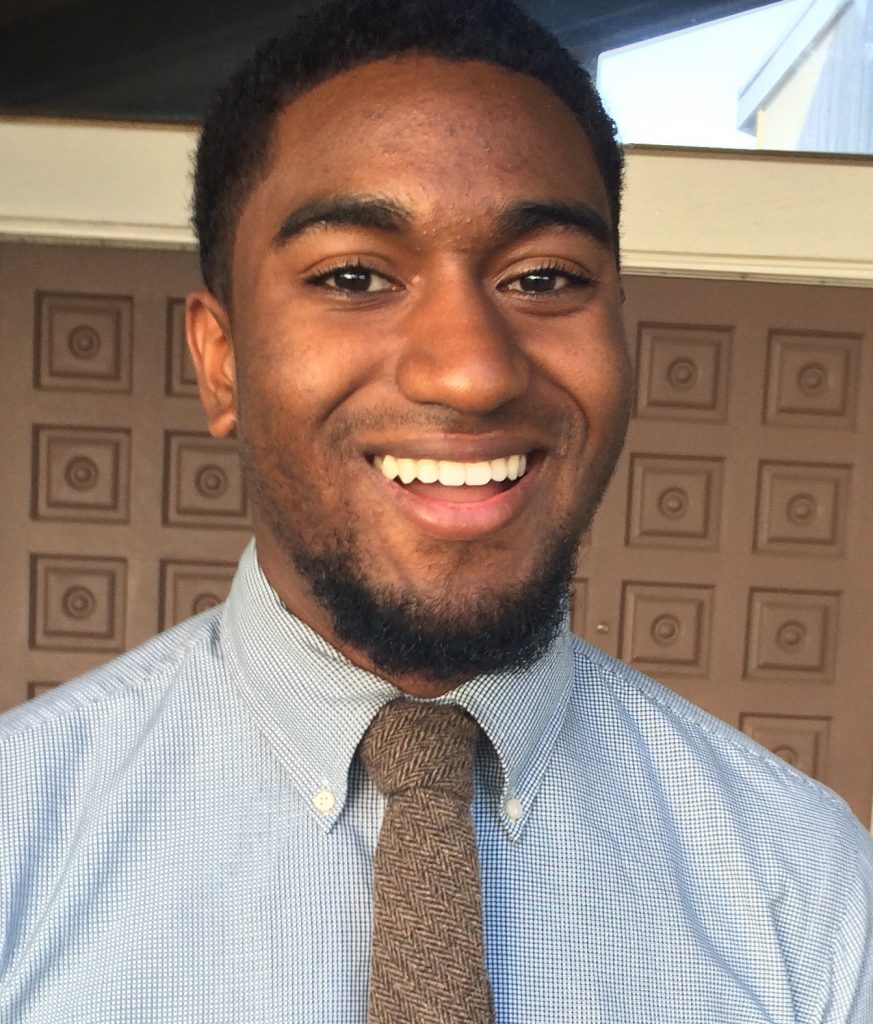
Michael-Sesen Perrilliat (2019 – 2020)
Equal Footing: Art and Activism meets Equitable Technology
Mentor: Jeff Burke
Year: Junior
Major: Political Science, African American Studies
The use of social media, smartphones, and accompanying compatible apps, websites, and tools allow members of marginalized populations to have a platform previously unattainable. Social media has played a huge role in the recent evolution of the civil and human rights movement, as Black Lives Matter itself was founded from a tweet and many organizers utilize social media to effectively communicate with others and to plan for methods to achieve change. In this new era, anyone with access to a smartphone or the internet can impact their surrounding community. However, this still requires particular skill sets, knowledge, and nuance to harness. The lack of diversity in the tech field suggests this. However, community organizations like the HUB and initiatives like yes we code that target previously excluded populations suggest change. By addressing the use of social media and technology, this project will specifically address marginalized populations, and with my major in poli sci and minor in af am, as well as my personal experience with community organizing, I’ll be able to target groups unreached previously. This research will help develop a framework of understanding, provide artists and activists a voice, and provide others a guideline toward a platform that embraces equitable use. I also seek to find difficulties or hurdles associated with the use of social media and technology.

Sahen Rai (2019 – 2020)
You Are Loved: Mental Health Tracking for Everyone
Mentor: Amit Sahai
Year: Freshman
Major: Computer Science
After losing a classmate to suicide last year, I realized that I wanted to dedicate my life toworking on things that help people struggling through depression and anxiety. I believe that the hardest thing about discussing mental health is not wanting to be a burden to people by telling them how you feel. This is why I created my app, You Are Loved. You Are Loved is a way for friends and families to keep track of how their loved ones are doing. Users enter a number every day on a scale of 1 to 10 based on how they feel; then, app takes an average of how their ratings and creates a graph tracking their numbers. This allows users to understand their data and identify days or time periods when they feel worse. Furthermore, whoever has added you on the app can tap your name to give you a call if you don’t seem to be doing great. You Are Loved also provides users with uplifting articles meant to make them feel better about the world, and sends them a reminder that they are loved every day.
Results: Sahen Rai’s Quad Chart

Rhiannon Wilson (2019 – 2020)
Computer Room: Poetry Exploring Digital & Domestic Intimacy
Mentor: Sarah Roberts
Year: Senior
Major: English, Developmental Psychology
A “computer room” changes shape based on context. In the realm of technology, it is a storage vault of servers. In historical terms, it might be the break room for NASA secretaries. For many people of my generation, the computer room was a space designated for the desktop. As digital technology became more portable, that room disappeared alongside the boundary between private life and public connection: the computer room is now any pocket.
Results: Video of Rhiannon Wilson’s project

Charles Zaloom (2019 – 2020)
EmbeddedML Application and Toolkit for Low-Power IoT and Wearables
Mentor: Venky Harinarayan
Year: Senior
Major: Electrical Engineering
Measuring muscle fatigue has historically been an imperfect science based on individual perceptions. Medical doctors, the military and athletes all work to maximize muscular optimization within the limitations of qualitative measurement. My project will provide a toolset that interprets electrical activity in muscle groups during physical activity providing measurable quantitative data. Data will be recorded and processed with a wearable electromyography sensor that will detect true muscle fatigue. Over the course of my research I will develop algorithms that solve complex signal processing problems using only a small, battery-powered device. Complex signal processing occurs in many IoT systems where a sensor remotely streams data to a server for processing. My solution will bring machine learning onto the sensor’s microcontroller and allow for low-power sensors to perform classification and initial processing locally before attempting to connect with a remote server. This project is very unique as there has been no push in industry to develop on-chip ML solutions. I believe that the applications of this toolset would allow for the development of IoT and wearable technology that can be used by the medical profession, military and athletes.
Results: Charles Zaloom’s Quad Chart
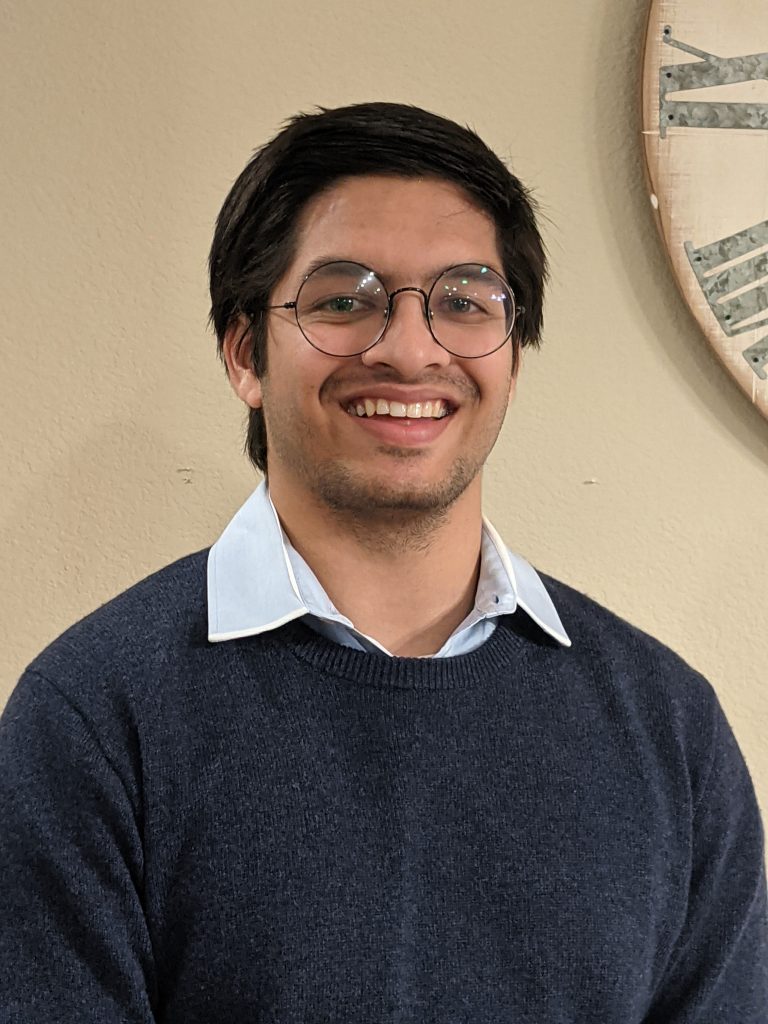
Rohan Bansal (2020 – 2021)
Online Learning: Is There a Better Way?
Mentor: Jayathi Murthy
Year: Junior
Major: Mathematics of Computation, Film & Television
Digital Learning is here to stay. But given the amount of content online, people are inundated with choices about the best path to learn. This project explores the question of which education method(s) are most effective when studying online. For different different fields and different individuals it is likely that these methods will vary. But, by conducting primary research on students this project hopes to find and generalize the digital study methods that they most respond to with respect to different types of subjects. Further, by consulting education professionals and professors at different institutions we will create a guided course of exploration and skill-development in different disciplines, optimized for online learning. This guided course would be in the form of a website and the student-study in the form of a paper. This not only means providing recommendations about specific resources, but also on the specific educational practices that one should institute while learning these subjects. This helps people who are exploring a subject or those who want to develop skills for their career. In either case, it makes access to higher education more accessible and equitable for people around the world.
Results: Rohan Bansal’s final presentation
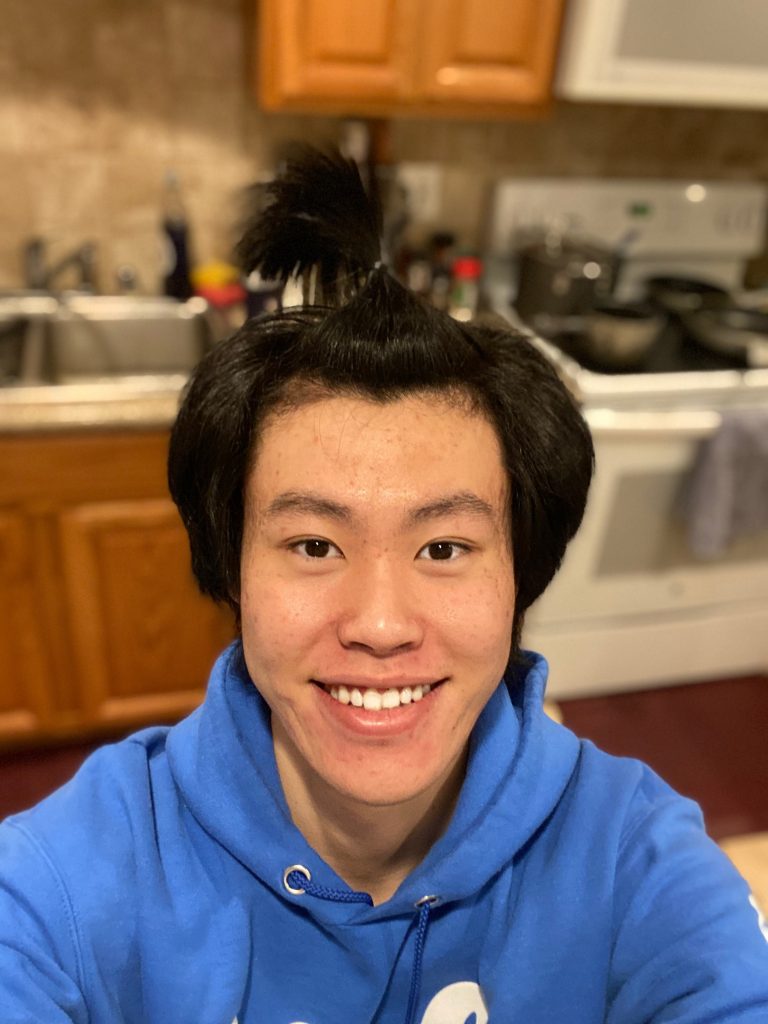
Zixuan Chen (2020 – 2021)
TactileSoccer: A Haptic Device Helping Blind People Understanding the Spatial Information in Soccer
Mentor: Peter Reiher
Year: Junior
Major: Linguistics and Computer Science
When Blind people watch a soccer game with friends, they can only depend on voice commentary to “watch” a soccer game. However, the spatial information, like the ball’s moving trajectory and where players running at, is often impossible to understand without others helping. Without spatial information, a fierce soccer game may become a tedious report. To solve this problem, we introduce TactileSoccer, a device to help blind people understanding what’s really happening in the court. Our device consists of two handles and one plate representing the soccer court. First, we use computer vision technique to convert a soccer match into spatial time-series data, and secondly, we map the data to our haptic handle. User’s left hand holds the guest team handle, and right hand holds the home team handle. The handles will keep moving, synchronized with real players moving, and they will give kinesthetic feedbacks according to player’s move, e.g, pass, shoot, out-of-bounds… Especially, when a player is passing a ball 45 degree from the north, the linear actuator will popup in the same direction to show where the ball is moving.
Results: Zixuan Chen’s Quad Chart
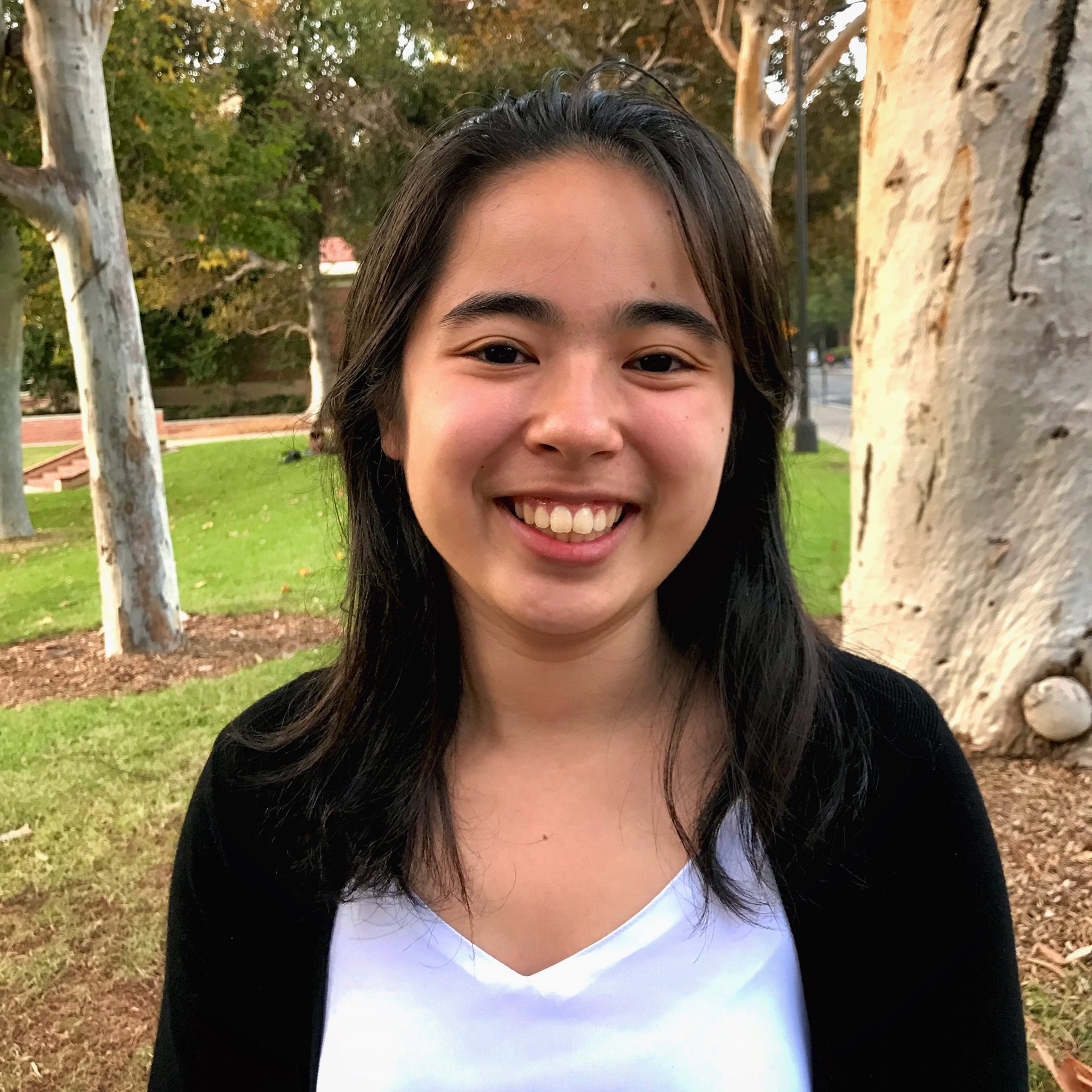
Naomi Golin (2020 – 2021)
The Global Digital Divide: Electronic Colonization and Gender Inequalities
Mentor: Jeff Burke
Year: Junior
Major: International Development Studies
Around the world, technology is seen as a method of increasing gender equality, providing women the opportunity to receive an education and join the workforce. While this may be the case, however, women in developing nations are failing to achieve equality at the same rate as their global north counterparts. Following the independence of colonized nations, a development discourse has emerged pinpointing neoliberal globalization as the only path to achieving development. Scholars have argued, however, that this Western-dominated framework has caused nations in the global south to regress. The development of technology has further aggravated this, leading to postcolonial theorists to declare that we have entered a period of “electronic colonization”. Despite technology’s significance, however, scholarship has yet to be produced on how this inhibits gender equality. While early movements have argued how structural inequalities are a major barrier, modern investigations have yet to be undergone on how technological advancements play a role. Thus, the aim of my project is to investigate how the injection of technology in the form of aid is exacerbating gender inequalities in the education, healthcare, and work sector in developing nations. I will be focusing on three specific regions: India, Sub-Saharan Africa, and Latin America.
Results: Naomi Golin’s Quad Chart

Jason Huan (2020 – 2021)
Private Cryptocurrency Transactions Using Rollups
Mentor: Amit Sahai
Year: Senior
Major: Computer Science
My project provides the utility for anyone to send cheap private transactions on the Ethereum network using rollups. One issue that has been plaguing widely-adopted blockchain networks is the high transaction fees that can occur as a result of demand for block-space outpacing available bandwidth. Rollups are blockchain mechanisms that allow for transactions to happen off-chain, by having users deposit funds into a smart contract which is managed by a different set of nodes reaching consensus from the mainnet. These off-chain transactions are executed by having the users sign and broadcast the transactions to the rollup nodes, which then later batch the transaction data into merkle witnesses which are pushed to mainnet for finality. This allows for cheaper transaction costs as the inputs are stored on rollup nodes instead of mainnet ones, while still maintaining verifiability through the witnesses. My research looked into open-source zk-SNARK-based private transaction smart contracts to provide anonymity, and the process of deploying them to a rollup and creating an interface for them.
Results: Jason Huan’s final presentation
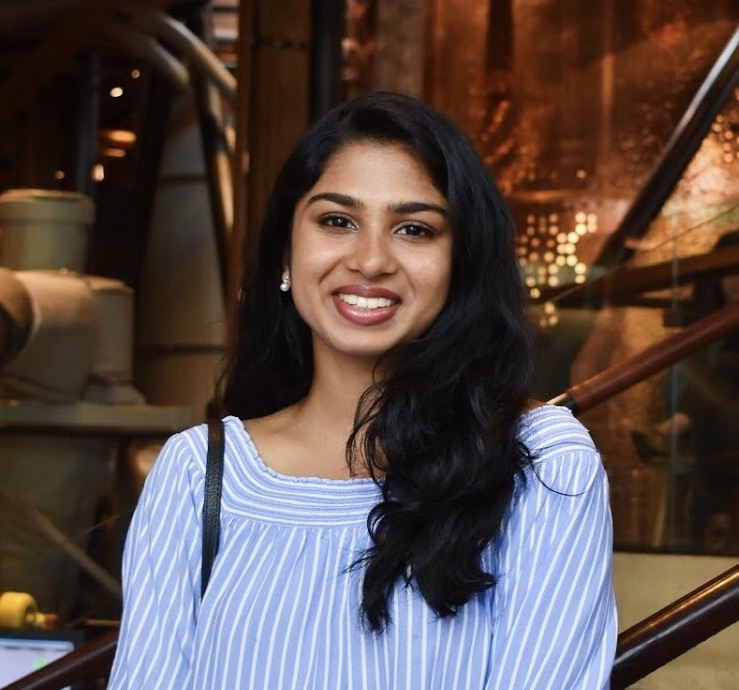
Megha Ilango (2020 – 2021)
Bias in Social Media Moderation and Evaluation of Bias Prevention Methods
Mentor: Ninez Ponce
Year: Senior
Major: Computer Science
Gender and racial disparities exist in schools, governments, and workplaces across the United States. In the past several years, social media platforms have increasingly played a role in political and advocacy based efforts to express views on or combat discrimination in the real world. However, both human and artificial intelligence based content and advertising moderation practices on such platforms have demonstrated bias based on content creators’ racial, gender, or political identities. In this study, I will conduct an analysis of existing literature to determine the scale and impact of algorithmic bias on internet platforms, and follow with a technical evaluation of various bias recognition and prevention methods. Using this research, I will recommend an appropriate technical and policy-based approach to combat social injustice caused by such algorithmic biases.
Results: Megha Ilango’s final presentation

Elishka Patockova (2020 – 2021)
Social Implication of Online Anonymity in Quantum Networks
Mentor: Leonard Kleinrock
Year: Junior
Major: Mathematics of Computation
Quantum internet is one of the most exciting technologies being currently developed. As with every new technology, there are social consequences of its integration into daily life. As we approach the release of quantum internet, it is essential to address the moral issues it brings about in order to adequately guard, and possibly legislate, against undesirable use. There is a plethora of issues that yearn for attention but due to the impeccable encryption that quantum internet provides, complete anonymity immediately stands out. Because the properties of quantum bits can not be measured without changing their state, quantum information cannot be extracted from them without leaving a trace. This sharply contrasts with the system that is in place today: much of internet activity is traceable and, consequently, the deep web contains much of the world’s online data. How will the introduction of quantum internet change the behavior of whistle blowers, online criminality, and ordinary users? The large social phenomenon of anonymity which has been largely introduced by the contemporary internet will reach new heights with the introduction of quantum internet and it is vital to consider its consequences before it is widely used.
Results: Eliska Patockova’s final presentation

Suraj Vathsa (2020 – 2021)
Deep Learning models that can be used to provide preliminary diagnosis for respiratory conditions using audio recordings of breaths and coughs
Mentor: Lilian Corral
Year: Sophomore
Major: Computer Science
With the growth of 5G and the internet, the ability to stream data from remote parts of the globe is more possible than ever before. One such type of data could be audio recordings of coughs and breathing sounds of patients suffering from respiratory conditions in remote regions. With the help of deep learning models, one can tap into the potential that this data carries and help provide some preliminary diagnosis for these patients after which they can take the necessary steps to visit the nearest local hospital or be scheduled to meet with a pulmonologist remotely.
Audio recordings of breaths and coughs can be represented as succinct time-series data when sampled in blocks effectively. We can employ sequential deep learning models to create latent representations of these data points. Further, we can also employ convolutional models to create representations of MFCC plots (as has been done in prior works on the topic). This data can also be combined with demographics and air quality data to create latent representations that can then be subject to classification using a variety of deep learning and statistical machine learning models. Based on a literature review, the target tasks could be a classification of adventitious sounds or detection of obstructive or restrictive patterns which can then be associated with diseases. The model, once trained and tested can be deployed in the cloud and can be served as a simple mobile application to patients/primary care physicians.
Results: Suraj Vathsa’s final presentation
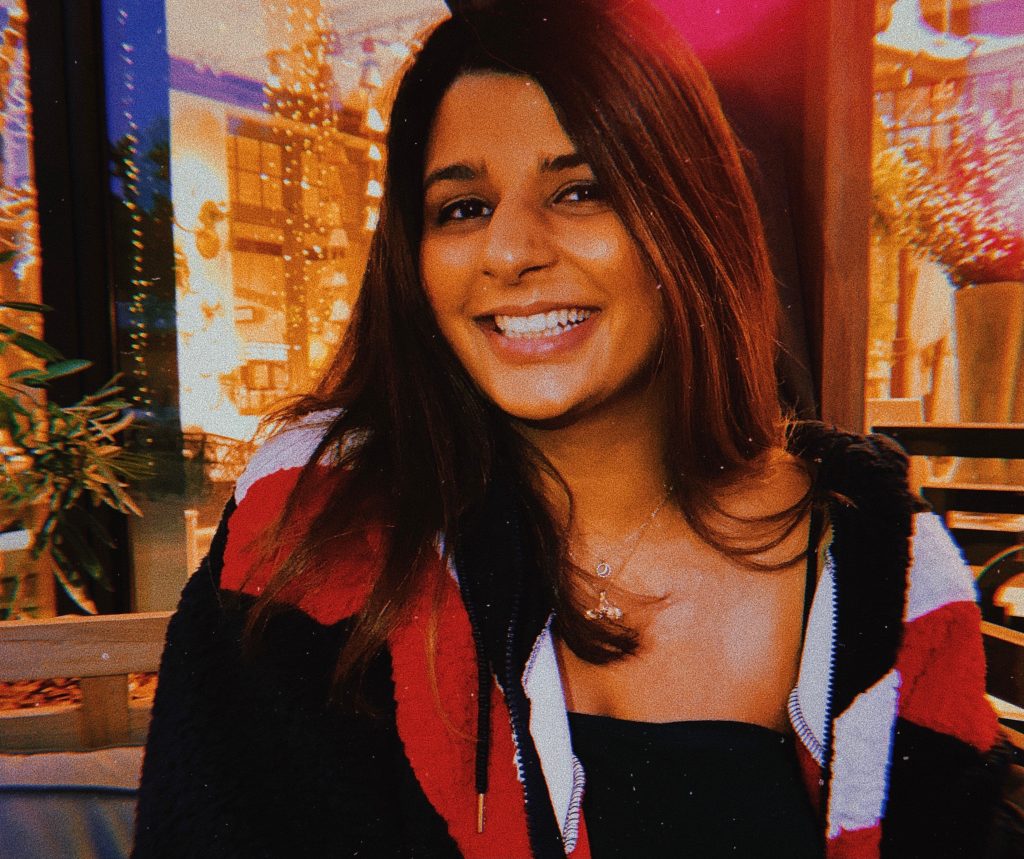
Rhea Churi (2021 – 2022)
IRIS by The H.E.A.L.L Initiative
Mentor: Jayathi Murthy
Year: Senior
Major: Neuroscience, Global Health
Problems of inequality within the healthcare system are often overlooked. We expect the doctors, nurses, and other medical practitioners are doing the best of their ability to treat us. However, for many marginalized communities, this is far from the truth. As of right now, we can see how the COVID-19 pandemic, which was thought to be ‘the great equalizer’ has instead highlighted discrimination within the medical sphere. The H.E.A.L.L (Health Equity and Accessibility for ALL) Initiative aims to combat this through the innovative new IRIS app/website. IRIS is a patient advocacy forum that would function as a public reviewal tool of hospitals in your area to share instances of medical racism/sexism/homophobia and more. People would be able to rate and share their own reviews of their hospital visit and access and support resources that reduce healthcare disparities. This project is unique because it publicizes the voices of underrepresented patients and shares their experiences of medical discrimination to the general population. It will draw awareness to those who suffer from institutionalized violence in medicine and promote activism and change for a better, egalitarian healthcare system in the United States.
Results: Final Presentation, Quad Chart
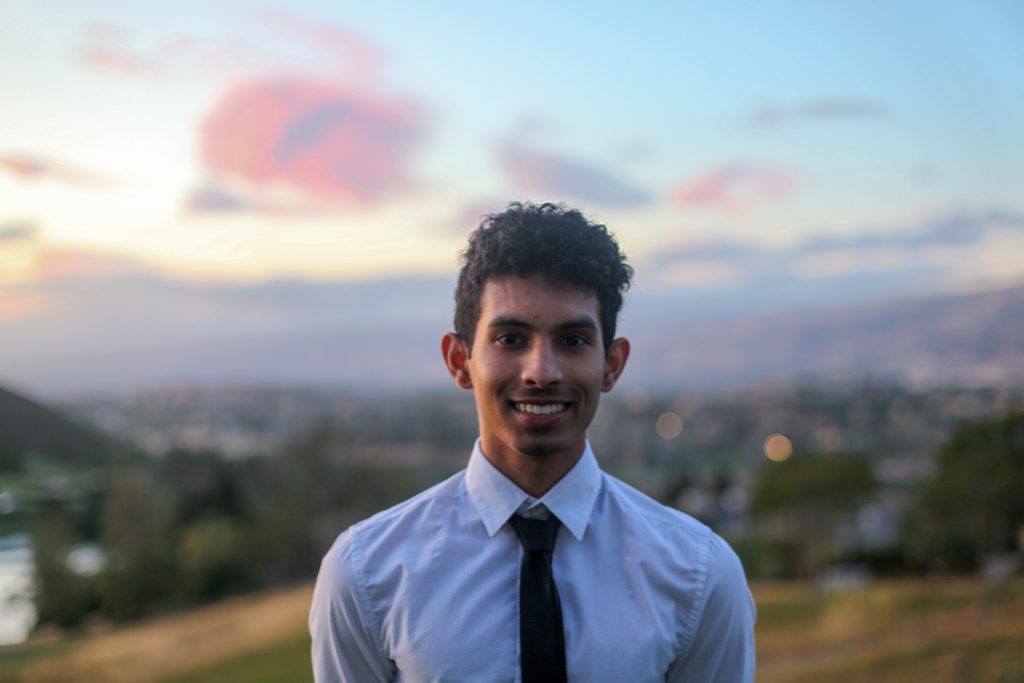
Kaushik Devireddy (2021 – 2022)
Crypto Firewalls: Secure Standards for Connected Cryptocurrency Wallets
Mentor: Venky Harinarayan
Year: Sophomore
Major: Computer Science
Crypto wallets were designed to be used by the individual in an air-gapped hardware wallet. However, as enterprises begin accepting cryptocurrencies as payment over the internet, and building programmable APIs and applications on top of crypto wallets (banking, custody, trading, etc.), these wallets will increasingly require connectivity to other wallets through full nodes and application servers. This brings along a slew of security challenges unique to connected crypto wallets: ensuring an infected application server can’t exfiltrate wallet funds, enforcing white/blacklists for transaction types and destinations, creating access-control lists for cold-storage transfers, etc. My project focuses on developing a set of open firewalling standards for the Bitcoin and Ethereum protocol to solve these challenges, and implementing them in software as an open-source project. This is unique as current network security solutions do not take into context the transaction-level details to protect wallets. This work will result in greater adoption of cryptocurrency for individuals and enterprises, as well as usher in the era of programmable, crypto-finance applications.
Results: Quad Chart, Final Presentation
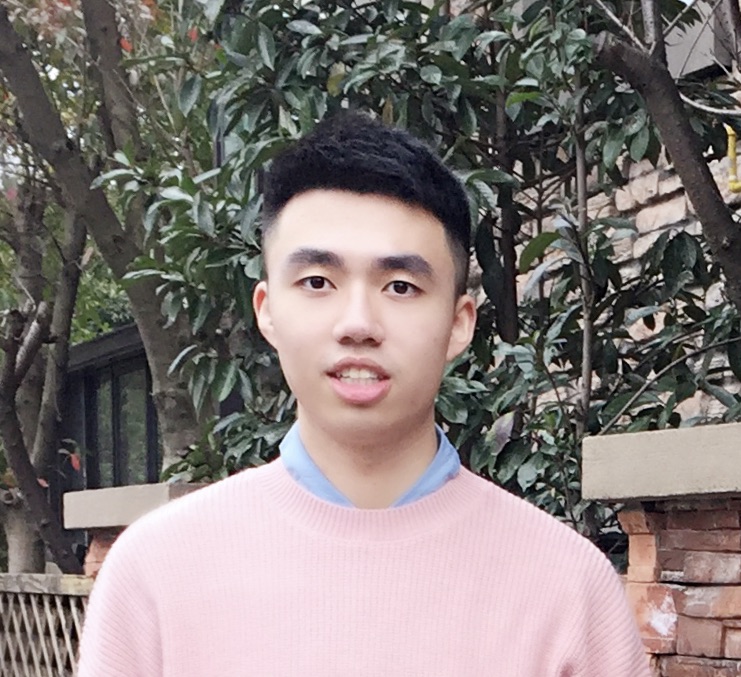
Zifan He (2021 – 2022)
P2P File Backup on Data Transmission and Storage Trading
Mentor: Leonard Kleinrock
Year: Junior
Major: Computer Science
As the development of cloud storage leading by Google and iCloud, backup on Internet become more and more popular. However, it has several disadvantages. First and foremost, you have to pay for these services, which may be a significant budget when backing up large data file. Second, the speed of downloading your stored file is mainly dependent on the distance between cloud server (affect latency) and PC and the bandwidth. Third, privacy concerns still occur. In the proposed project, utilizing P2P technology, it is possible to store backups on the nearest computers, and upload/download process would be faster correspondingly. To download files, an idea similar to mapReduce can be used, where file segments can be processed between computers and aggregate onto user’s PC. Although there is a company called BuddyBackup working on the similar project, the proposal will focus on how to efficiently segregate files and distribute them, collect and combine files during download, and an ecosystem that allows users to trade unused disk storage. All of these have not been accomplished by BuddyBackup. If the project were accomplished, users can backup files with relative low price or even free, and the disk restoration would be quite fast.
Results: Quad Chart and Presentation
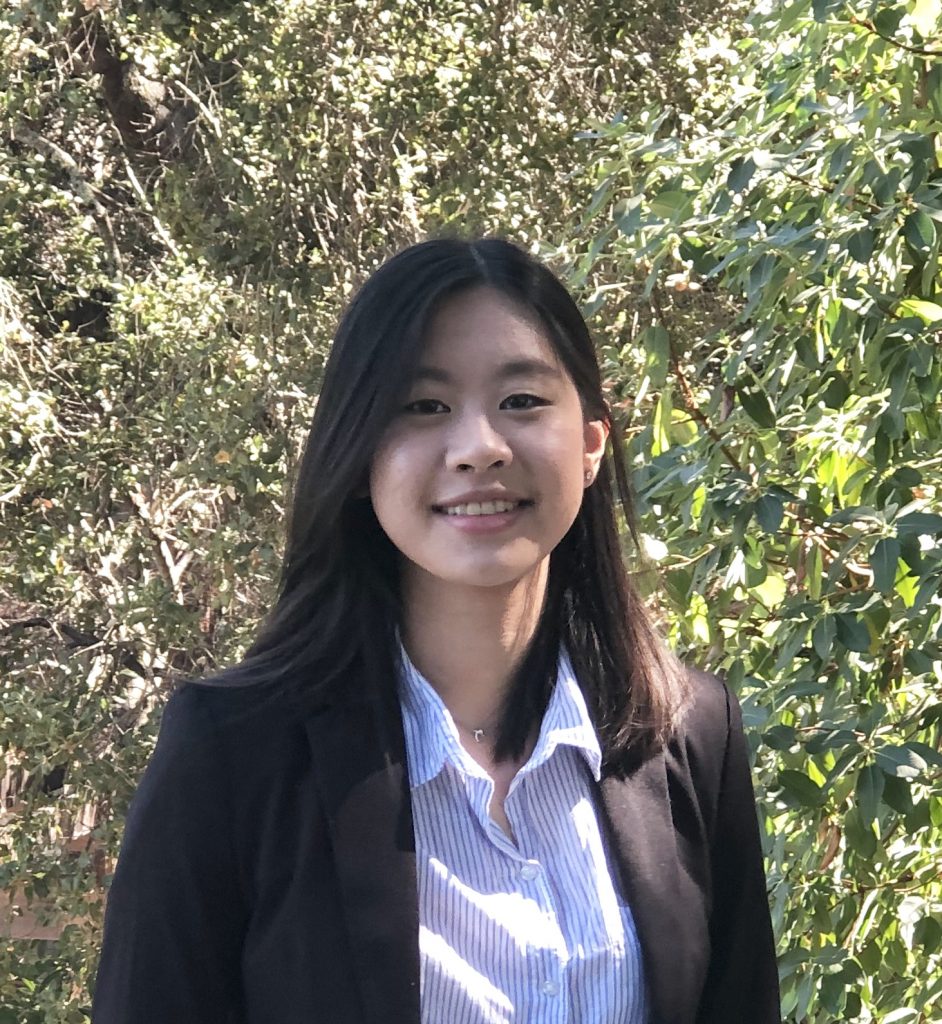
Olivia Loh (2021 – 2022)
Gesture-Controlled Automation for Remote Filmmaking
Mentor: Jeff Burke
Year: Senior
Major: Computer Engineering
Social distancing due to the pandemic poses a great challenge to the film industry, a highly social, collaborative, and practical field. Due to social-distancing regulations, film production teams have resorted to remote filmmaking to limit the number of people on set. This would allow for a majority of the crew to work from home, as remote filmmaking software facilitates high-quality end-to-end live streaming service. Nevertheless, there are still some limitations to remote filmmaking, such as the lack of direct interaction between filmmakers and the physical set. I would like to propose a project that can improve on existing remote filmmaking technology by introducing a gesture-control component to live streaming. Filmmakers can make hand signals through their webcam (interpreted by a gesture-recognition machine learning model) and certain equipment on set will react accordingly, as if the filmmakers were actually present at the set. Smart gesture control has not been fully incorporated in remote production as of now. Incorporating gesture control can bring more convenience to the workflow of the set, as the nature of filmmaking is literally “hands-on” and production crews often rely on direction through hand signals. Furthermore, such gesture-control automation technology can apply to and benefit many other fields that require remote work as well.
Results: Final Presentation, Quad Chart
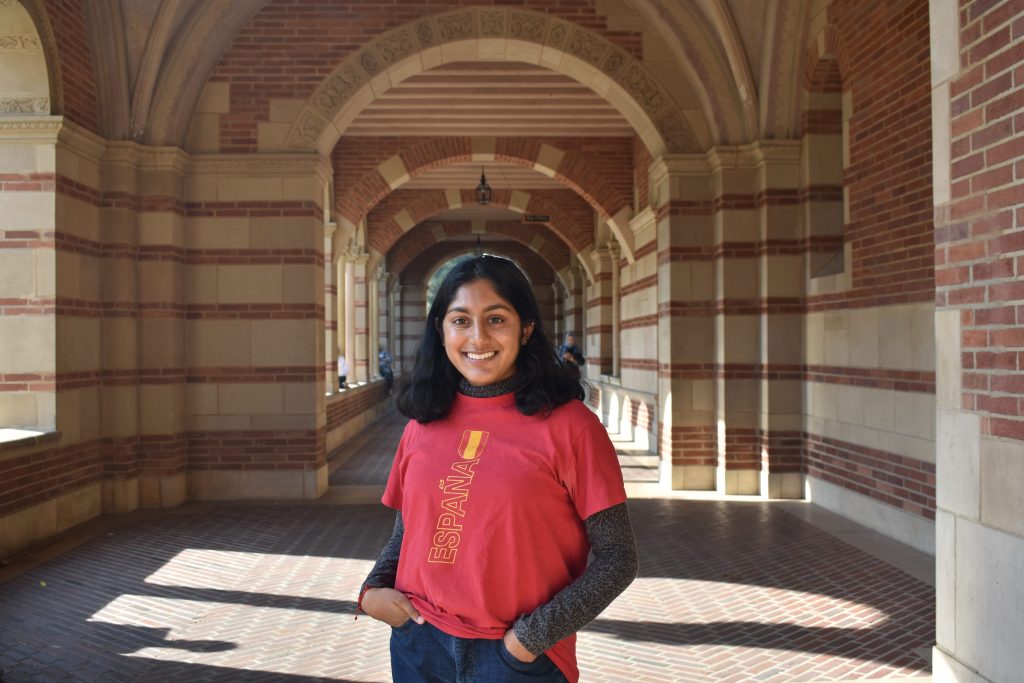
Maya Raman (2021 – 2022)
Improved Load-Balancing Algorithms for efficient energy usage in Data Centers
Mentor: Rajit Gadh
Year: Junior
Major: Computer Science, Environmental Systems & Society
As the world’s use of the Internet increases, the data centers our daily actions rely on are using more and more energy. Most data centers only operate at less than 50% capacity, wasting energy that could be saved if idle servers were turned off. In my project, I want to explore the best load-balancing algorithms for data centers to serve requests efficiently and turn off unused machines to save energy, while maintaining an acceptable quality of service. I will split the algorithms into those used for large-scale (Google, Facebook, etc.) and small-scale data centers. While the topic of efficient load-balancing algorithms has been extensively studied, this project is unique because it explores the best algorithms for differently-scaled data centers, and considers the benefit of turning off machines. I will first conduct a literature review to determine these algorithms, and will then simulate them using CloudSim software with variables such as amount of traffic, amount of virtual machines, and amount of off servers, to determine which algorithms save the most energy for each type of data center. Finally, I will propose mechanisms for how data centers can implement these energy-saving changes based on their scale and load.
Results: Quad Chart and Presentation

Emir Izat Rashid (2021 – 2022)
Misunderstood Information: Grassroots, Public Figures, and Behavioral Interventions in Misinformation.
Mentor: Amit Sahai
Year: Senior
Major: Applied Mathematics
Social media has transformed how societies communicate and interact with each other. Although social media undoubtably has led to great strides in connecting the world, it also ushered in an age of mass misinformation – shaping a significant component of public discourse largely based on untruthful claims. Contemporary literature on misinformation observed the spread of misinformation through two approaches, the bottom-up approach, i.e misinformation propagated by participatory actors, and the top-down approach, i.e misinformation spread by public figures or institutional actors. However, there is still an unclear methodology on measuring the impact of top-down involvement on grassroots driven misinformation or vice-versa, identifying key agents responsible for different forms of misinformation spread, and analyzing the impact of behavioral interventions on misinformation such as tagging some posts as harmful. This study will investigate these unanswered questions by integrating social network analysis and information retrieval techniques to :- a) observe the relationship between online discourse and user-based construction of social networks, b) identify key agents by measuring centralities on user-based social networks and their associated impacts on discourse, and c) evaluate the impact of behavioral interventions on social networks, whether it strengthens or weaken misinformation-driven networks.
Results: Quad Chart and Report
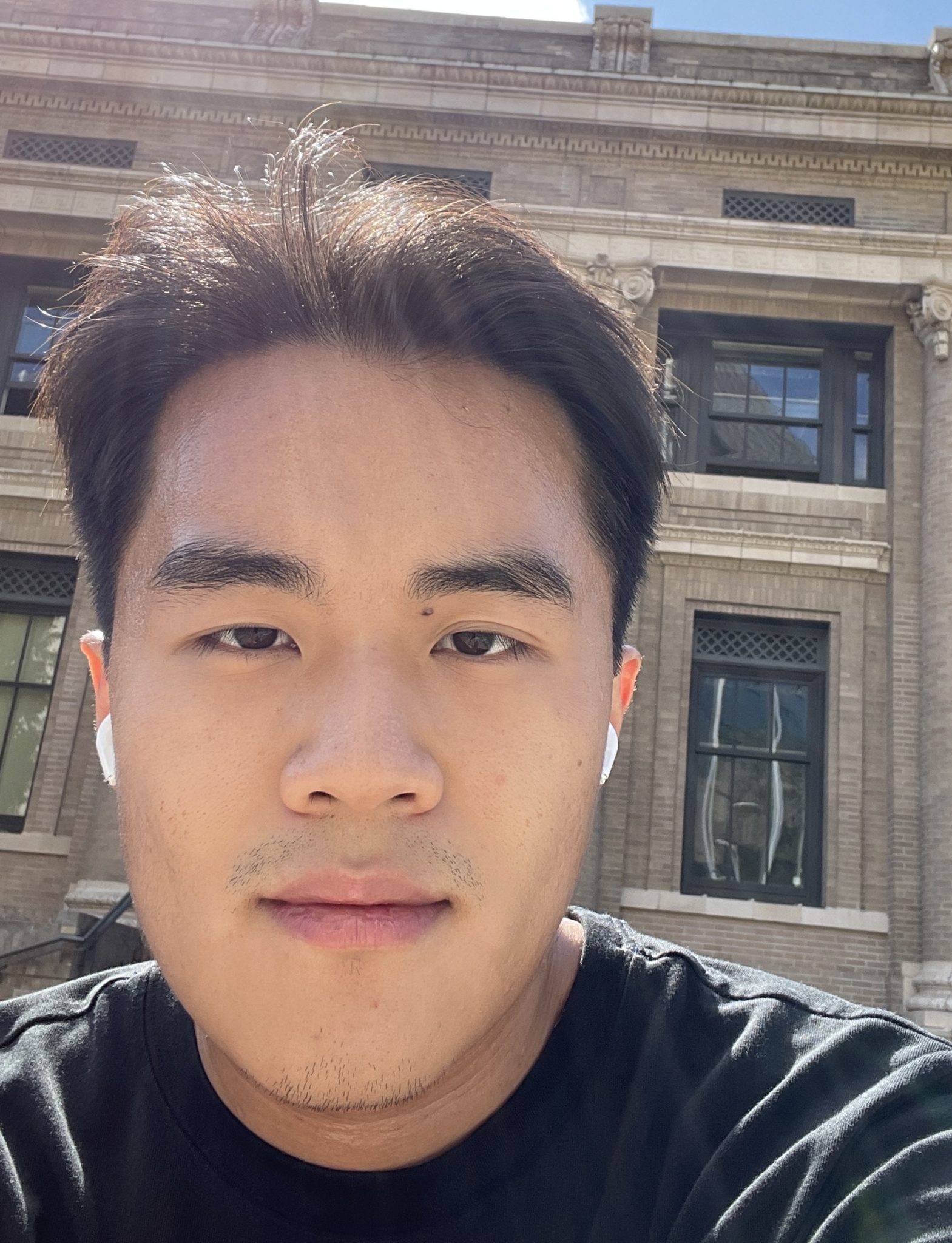
Henry Chang (2022 – 2023)
Using Named Data Networking to Provide Cross Platform Data Air-Drop
Mentor: Leonard Kleinrock
Year: Senior
Major: Computer Science
Despite having a medium for data communication (Bluetooth, wifi, cable), it is extremely difficult to share data between modern devices. Users have to turn to third party providers (such as Google Drive, email the document to themselves) in order to share information between devices conveniently. The current exception with a file sharing functionality built in is Apple’s AirDrop. But what about communication between Apple and Windows, Androids, and other OS? Why can’t we simply send the data directly from device A to device B, regardless of the device type?
The reason is because there isn’t a secure network protocol to link all devices together. My project looks to conduct a case study using Named Data Networking (NDN) to create an airdrop functionality between devices of different brands and OS with a major emphasis on security. NDN is a data centric networking that provides a secure way to transport data. By using the protocol, devices of various models can communicate with one another, by sending interest packets for the specific data. My project is unique because it utilizes a completely new networking model compared to the traditional addresses-based networking. If successful, the project can provide easy data communication between all devices.
Results:
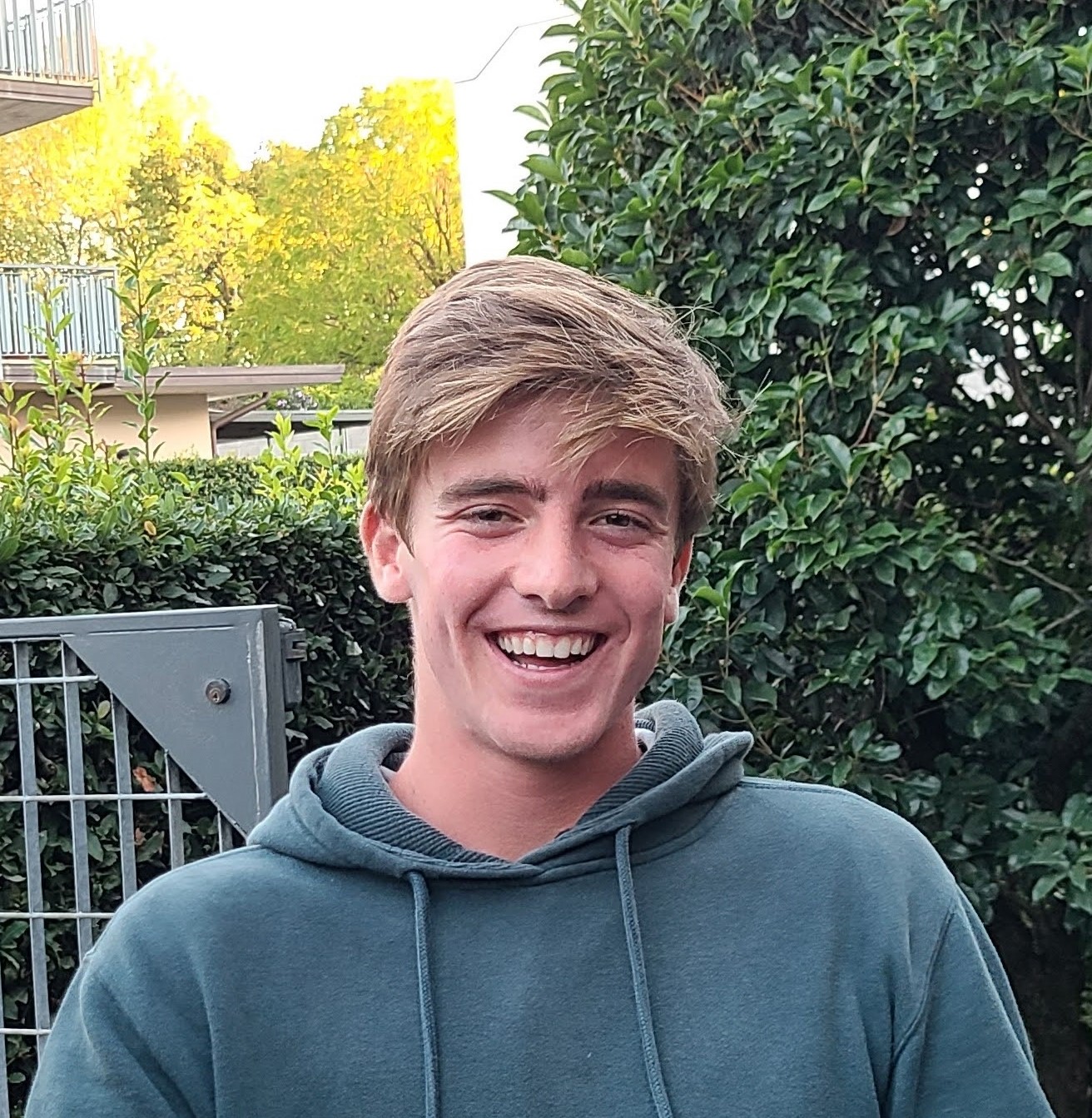
Nicola Conta (2022 – 2023)
Using Low-Cost IMU Sensors for Accessible/Personalized Training in Physical Therapy
Mentor: Venky Harinarayan
Year: Sophomore
Major: Electrical Engineering
Measuring progress in physical therapy is commonly done by doctors and therapists through qualitative measures, such as looking at the positioning of body parts in exercises. Not only is this subject to human interpretation, but it is also not very equitable, excluding many underrepresented groups who do not have access to the therapists and tools related to this side of healthcare. My project aims to provide an accessible and personalized solution to physical therapy by using a sensor that compares the cross-correlation of acceleration and rotation signals of certain exercises in order to classify motions. This solution executes machine learning onto a sensor microcontroller, allowing the sensor itself to perform the classification of motion locally, instead of processing the data externally, which is historically how it is done. The benefit: instant personalized feedback. A simple set of training could be done under the guidance of medical professionals, to “teach” the sensor system how to perform certain exercises. This can then be distributed to the patient to have a chance to learn through the sensor’s feedback. Local processing can get more out of wearable technologies and has the potential to create a tool that can continue expanding access to healthcare.
Results:
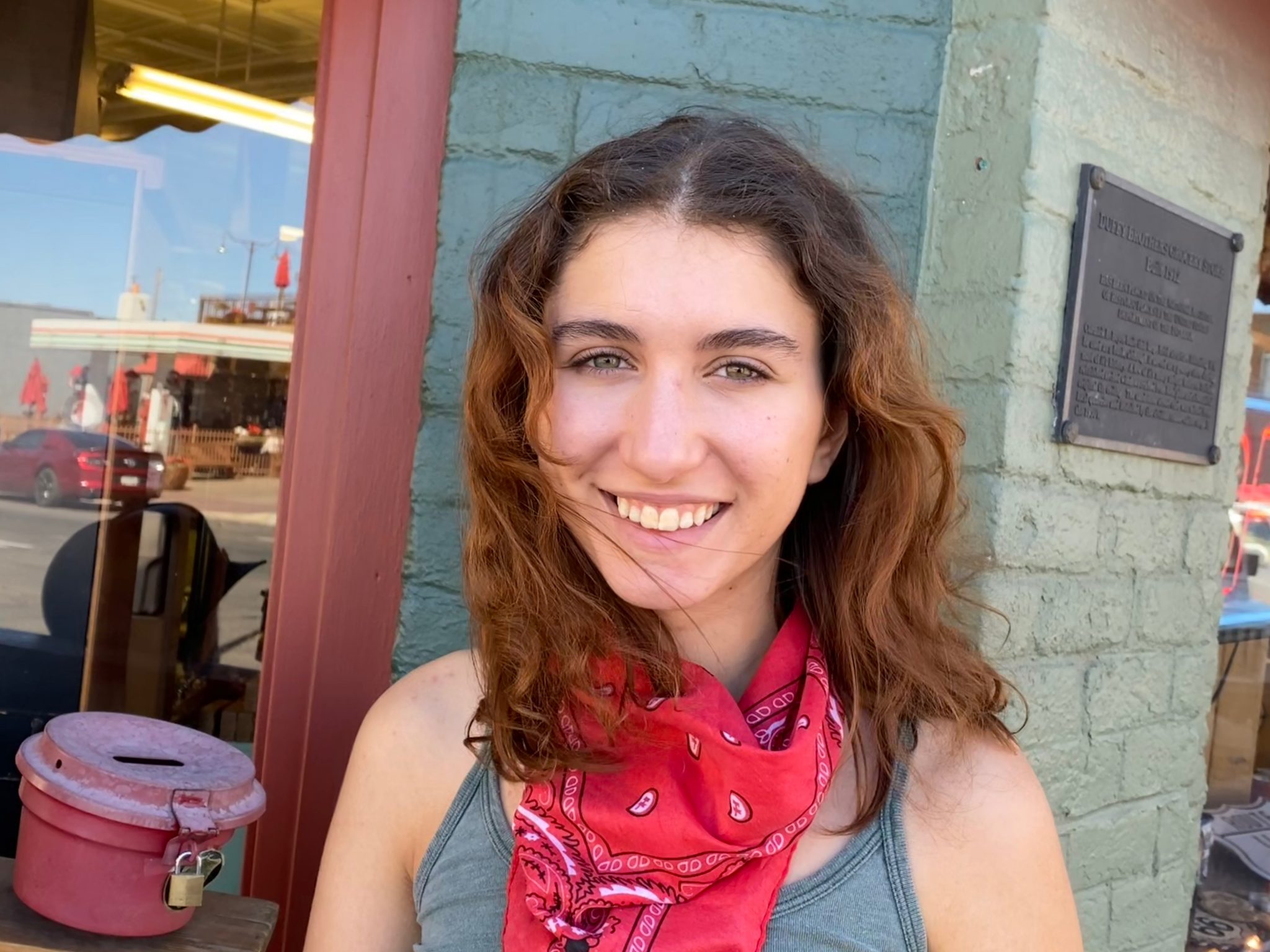
Hannah Jannol (2022 – 2023)
The Internet’s Radical Transformation of Queer Adolescence
Mentor: Mariam Posner
Year: Senior
Major: English, Arabic & Islamic Studies Minor
From normalizing queer identity, to enabling the purchase of hormone-replacement therapies, the Internet has transformed queer adolescence. Queerness is more accessible than ever, producing a generation with new understandings of sexuality, sex, and gender. This project seeks to elucidate these new understandings, identify how adolescents use the Internet through a queer lens, and consider how this unprecedented access contributes to and inhibits progress. I will analyze how queer digital culture has evolved and transformed queer adolescence since the early 2000s, examining a broad range of unexplored queer online cultures. I will conduct surveys with critical populations and provide a literature review of existing publications. By the end of the year, I will produce an academic paper answering these questions and a unique educational guide to queer online practice and culture for adolescents, educators, and parents. This is an urgent and understudied issue, especially relevant amidst attacks on queer children such as the “Don’t Say Gay” bill in Florida and bans on gender affirmation treatments in Texas. My project will shed light on how the Internet provides a refuge for queer adolescents while also being a dangerous underground teenagers turn to when fleeing a queerphobic culture.
Results:
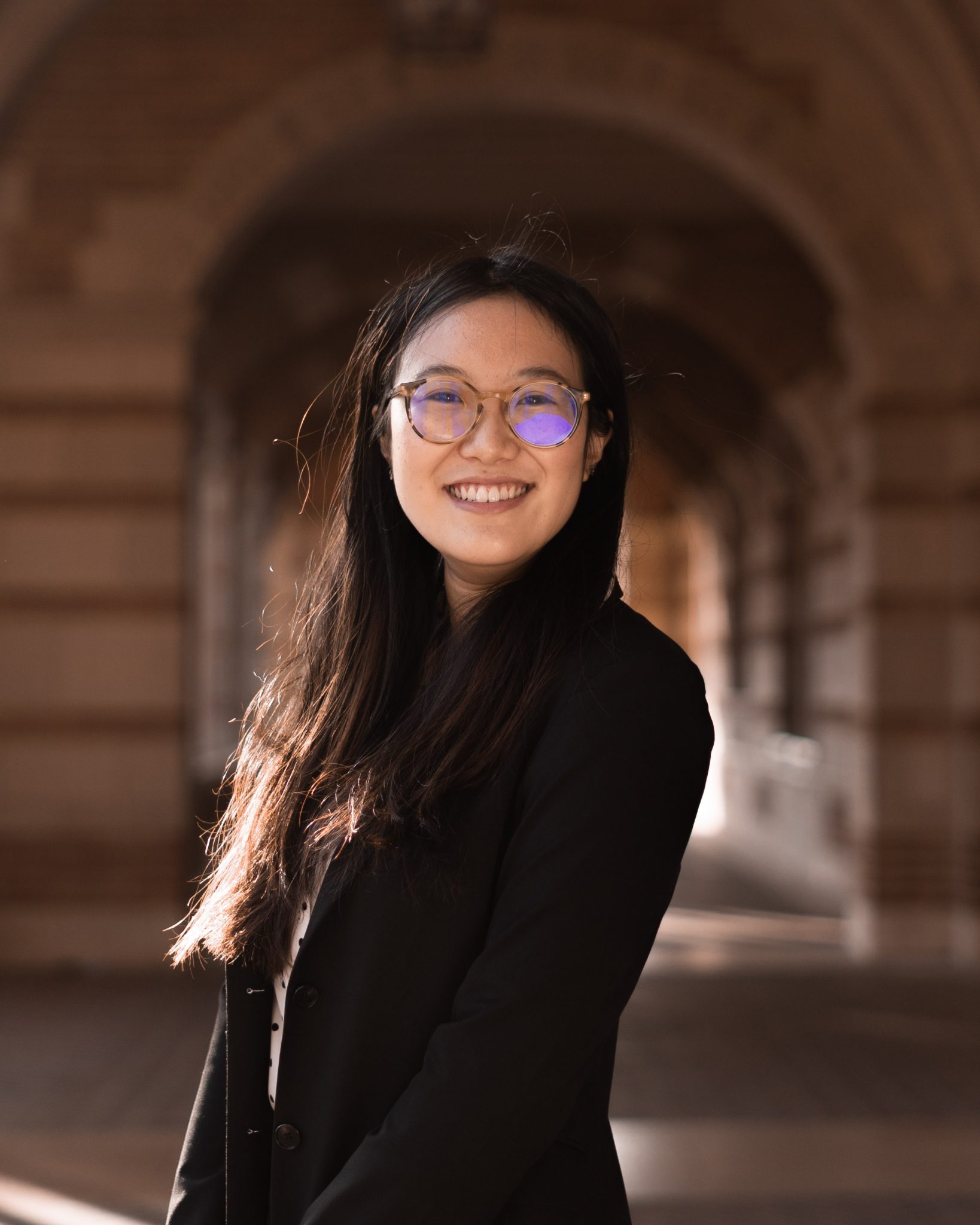
Minh-E Lau (2022 – 2023)
Closing Technological/Cultural Gaps: Providing Accessible Education for Refugee Children
Mentor: Amit Sahai
Year: Senior
Major: Global Studies, International Migration Studies Minor
Many refugee populations endure unimaginable violence and exclusion where their basic human rights are not respected. Education, in particular, is significant because of the population it affects: children. Currently, about 3.5 million refugee children worldwide are unable to attend school lessons because of structural barriers and inadequate support. Education is essential because of the importance it holds in children’s development and their integration into the host society.
My project aims to address some of the most common problems in providing education in refugee camps: the lack of cultural contextualization, funds, and formal curricula. I aim to design a skills-based educational model that could be delivered over the internet, and applications popular with refugees like Whatsapp, that equips refugee children with practical expertise and knowledge that is culturally relevant to their situation. The model would be piloted amongst Rohingya children.
The project that I propose is unique because of its method of delivery; it will be designed to be accessible to anyone with a smartphone, which many refugees use to stay connected.
Overall, the new curriculum will be both culturally relevant and practically accessible to refugee children, overcoming typical shortcomings of many existing refugee education programs.
Results:

Jessica Li (2022 – 2023)
Predicting NHPIs in California neighborhoods from social indicators of health
Mentor: Ellen Levy
Year: Senior
Major: Computational and Systems Biology, Digital Humanities Minor
When it comes to accurate data reporting, the Native Hawiian and Pacific Islander (NHPI) population has been consistently left behind, creating negative ripple effects in resources and services allocated to the NHPI community. Currently, California’s Healthy Places Index (HPI) serves as a neighborhood equity metric that predicts which areas experience the most healthcare disparities based on analyzing social indicators of health. California’s 1996 Proposition 209 prevents the HPI and any other equity metric from factoring in race or ethnicity to allocate government resources. When compared to Census data, however, NHPI and Asian American populations are the most underrepresented racial groups in the most disadvantaged neighborhood tracts according to the HPI.
The project will involve a series of data tools and visualizations that will improve upon the HPI metric in terms of addressing underrepresentation of NHPI and other racial/ethnic groups in its predictions. It will use a linear regression of indicators of health to more accurately parallel disadvantaged neighborhoods with racial/ethnic groups. Ultimately, it aims to provide meaningful and necessary information to NHPI-serving community-based organizations for the purpose of advocating for NHPI community health, whether that be in fundraising, grant writing, or program design.
Results:

Mia Luong (2022 – 2023)
Combatting hyperconsumption in the technological age
Mentor: Safiya Noble
Year: Junior
Major: Statistics and Economics, Data Science Engineering Minor
This project aims to address the issue of hyperconsumption in the technological era. The rise of social media and targeted advertising has led to an impulsive, unnecessary, and unsustainable consumption behavior that has far-reaching environmental and social consequences. I hope to tackle this by exploring in detail how algorithmic advertising influences consumption behaviors, and researching how algorithms and artificial intelligence models can be used to encourage sustainable consumption. I will also explore the forms that sustainable consumption can take in an era with growing economic inequality. This project will involve surveying consumers with different levels of technological literacy, Internet use, and economic privilege, and asking a random sample in each group to change their Internet usage. The results of the study will serve as empirical evidence of the impact of big data, and help formulate a recommendation on how sustainability can be incorporated into ads algorithms. Ultimately, this work will inform people of sustainable actions in an era of social media and mindless consumerism, and guide data scientists to create socially impactful products.
Results:
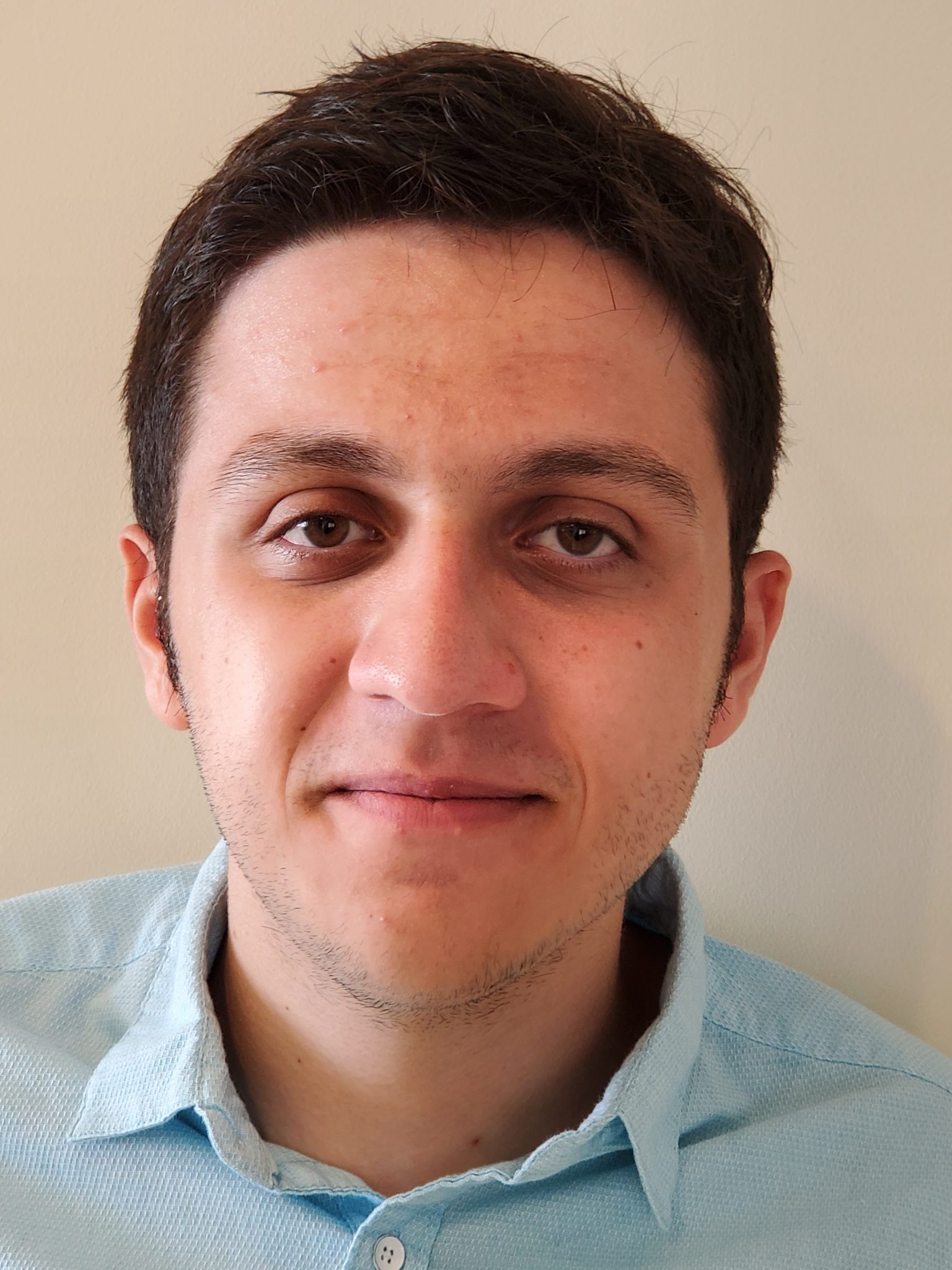
Joshua Mehrdad (2022 – 2023)
Social Media User Self-Identification and Its Effect on Profile Opinionation
Mentor: Lilian Coral
Year: Senior
Major: Psychology
How do social media platforms play in stereotypes and assumptions about their user base’s identities and political affiliations? Does the perception of userbases change based on a user’s platform affiliation?
This project will design a survey that asks for participant reactions and opinions about statements made on different social media platforms. Survey respondents will be split into two groups (experimental, control), the control group’s sample statements will be stripped of identifying information that reveals the platform the statement was made on while the experimental group will see the platform details. We will then ask questions about survey respondents’ perceptions of a series of statements. We hope this sample will help unpack the role of platforms themselves in user perception and stereotyping.
While there is literature on identity formation, affinity, and oppositional identity formation on social media platforms, little work has been done on the role of user perceptions of platforms themselves in evaluating other user statements.
This work will assist in the understanding of how social media platforms are perceived and the role of that perception in forming opinions of user statements or behavior. The platform itself provides context for a user to interpret the content in front of them.
Results:

Sela Serafin (2022 – 2023)
OZA: Community-Powered Streaming
Mentor: Jeff Burke
Year: Senior
Major: Communications, Digital Humanities
In today’s fragmented content landscape, the abundance of film and TV options makes it increasingly challenging to find and access content that aligns with our personal preferences. Moreover, popular streaming platforms like Netflix or Hulu often fall short in providing satisfactory algorithmic recommendations. Amidst this, everyday consumers and community members have stepped up to play a more significant role in content distribution. Rather than relying solely on targeted advertisements or platform recommendations, users are turning to social platforms such as Reddit Forums, Twitter, Facebook Groups, TikTok, and Discord channels for content suggestions. This shift highlights the growing influence of regular people in driving traffic to specific content and enhancing the improving the discovery process on streaming platforms.
This project introduces a framework for a community-powered streaming platform called OZA. The platform aims to integrate human-based recommendations to enhance content discovery. Additionally, it proposes leveraging blockchain technology to incentivize and reward users for their valuable contributions to the platform. By implementing blockchain-based rewards, OZA can acknowledge and recognize the efforts of users, fostering a sense of community engagement and enhancing the overall streaming experience. By combining user-generated recommendations, social platform integration, and blockchain-based incentives, the framework for OZA strives to create an environment where content discovery is improved, personalized, and driven by the collective wisdom of the community.
Results: Sela Serafin’s Quad Chart
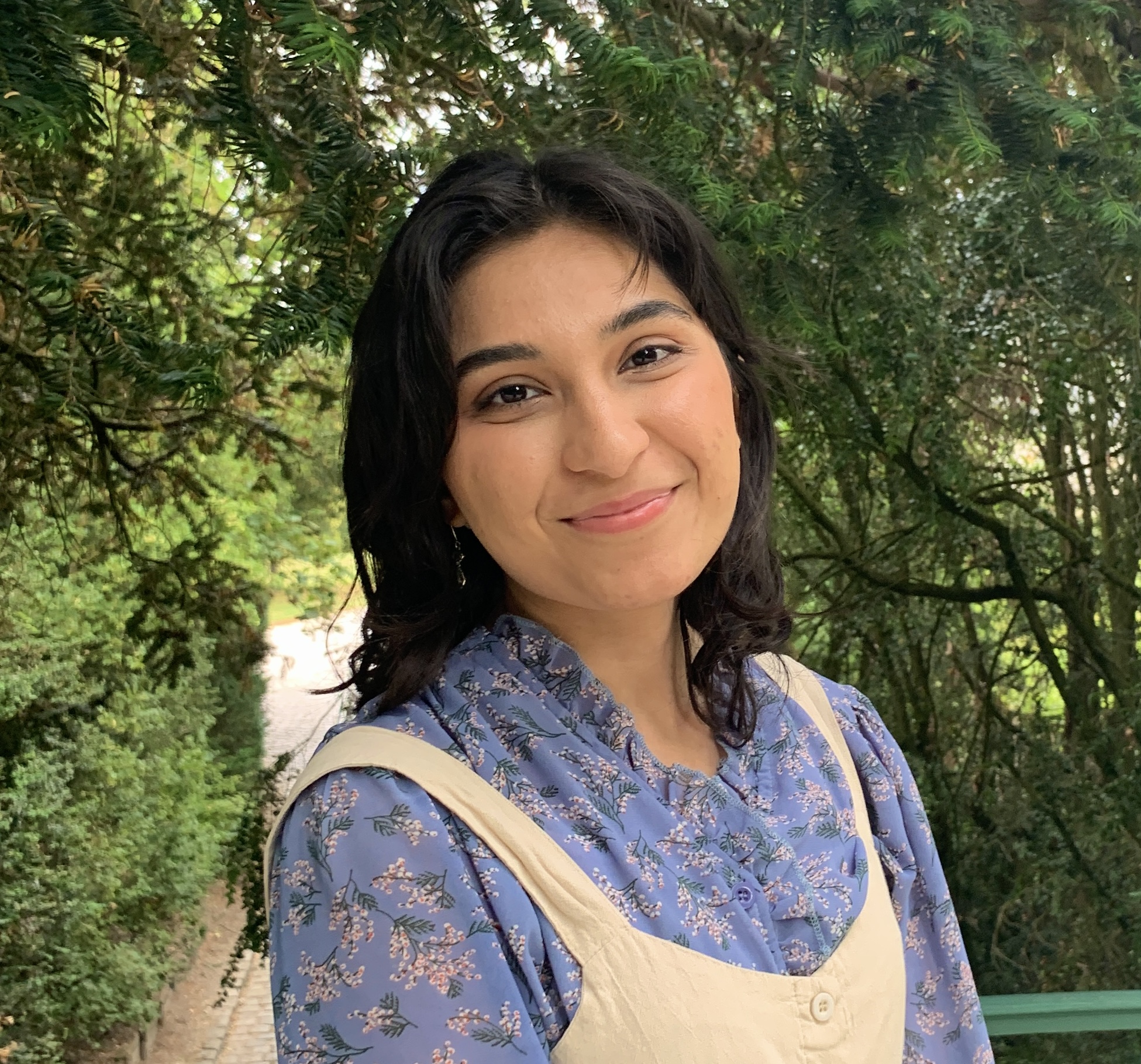
Maizah Ali (2023 – 2024)
Mapping Our Stories: Oil Drilling and Environmental Health in LA
Mentor: Maggi Phillips
Year: Senior
Major: International Development Studies, Cognitive Science
Thousands of oil drilling sites are concentrated in Los Angeles, which houses the largest urban oil field in the United States. These oil drills are often located near low-income neighborhoods where primarily people of color reside. Oil wells – both active and inactive, though unsealed – have well-documented negative impacts upon people’s health, leading to headaches, asthma, headaches, nosebleeds, and cancer in affected residents.
By working in coalition with community organizations such as STAND LA, I hope to create an interactive, multimedia mapping tool that showcases the stories of people of color impacted by neighborhood oil drilling. This mapping tool will creatively consolidate both quantitative and qualitative data, from oil drilling statistics to written narratives and oral histories of health experiences. Through this, I hope to ethically elevate technology to empower communities to unite against this environmental injustice. Another aim is to provide accessible information for individuals and community organizations about the health effects of living near urban oil wells; this mapping tool will be linked to a Google form and will automatically update whenever individuals contribute their stories. Through collaborating with community organizations, this project is also meant to support policy action against oil drilling through visualizing its health impacts.
Results:

Dylan Fox (2023 – 2024)
Subliminal Directions: How Digital Maps Subconsciously Shape Our World
Mentor: John Villasenor
Year: Senior
Major: Cognitive Science w/ Specialization in Computing; Bioinformatics and Latin Minors
Easy-to-access digital maps such as Google Maps have revolutionized the way we navigate our surroundings. However, the impact of these Internet-based programs on our perception of space and on the strategies we employ in navigating our built environment is not well understood. My research will explore the effects of digital maps on spatial cognition, wayfinding, and navigation behaviors, on both individual and societal levels. Specifically, I hope to uncover (1) how extensive reliance on digital maps shapes individuals’ spatial understanding of novel outdoor environments, and (2) how widespread use of digital maps drives land use, transportation, and economic flow in urban spaces.
The unique contribution of this research lies in its interdisciplinary approach, combining methods from urban planning, psychology, and human-computer interaction. Insights from this work have potential to make more ethical and equitable our relationship with mapping technology. Many stand to benefit, from map and app designers to bikers and pedestrians, from urban planners to the unhoused. Ultimately, better understanding the cognitive and social implications of easy-to-access digital maps will inform the design and navigation of our built environment.
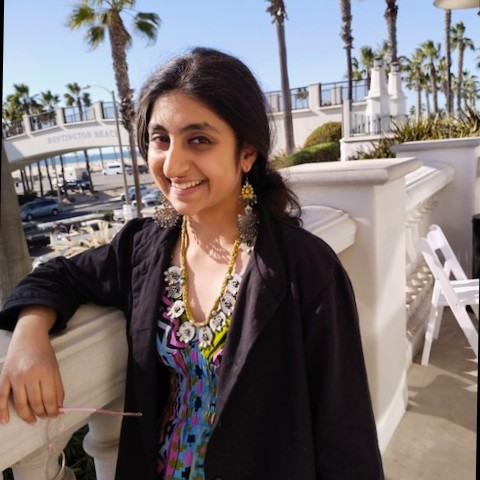
Radhika Mehra (2023 – 2024)
The Case for AI Based Conflict Resolution Framework in Peacebuilding
Mentor: Amit Sahai
Year: Senior
Major: International Development Studies
In the post-pandemic era, as international conflicts escalate with the changing balance of power, and data discrepancies exacerbate tensions in these conflicts, AI can play a positive role in conflict resolution and peacekeeping. The aim of this project is to research the methods through which AI can provide impartial and inclusionary mediation ( pre/ post-conflict analysis, large data processing, digital dialogues, legal consultation) and suggest solutions for obstacles to AI in providing these services( gender-race biases, regulation, user training, privacy infringement ).
I will conduct literature reviews, case-by-case study of AI’s application to dispute resolution ( for instance, in Yemen, Libya, Sudan by UN) and conduct interviews of experts, who specialize in this intersectional field, to understand the existing opportunities, and roadblocks. After bringing these learning in the form of a report, I want to specifically highlight the institutional reforms that can aid create a conducive framework within which AI mediation technology can grow. My aim is not suggest a replacement of human mediators, rather an AI support apparatus that fights information asymmetries, and provides impartiality in sensitive scenarios. As AI increasingly enters warfare, as seen in the Russo-Ukrainian war, AI in peace building will be a crucial counterbalancing force.
Results:
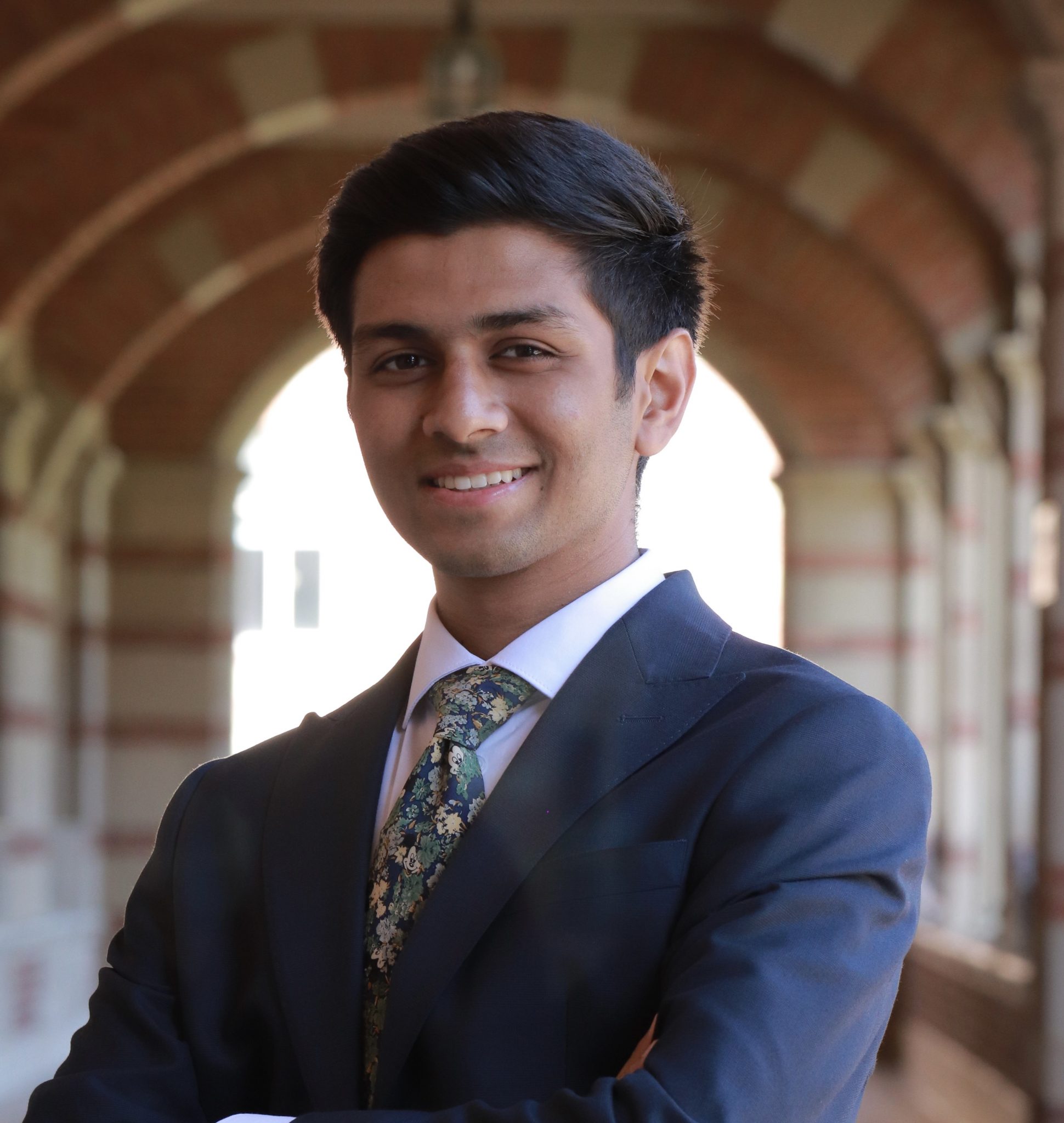
Akshat Mittal (2023 – 2024)
FavorX: Researching incentives to sustain a decentralized, moneyless favor economy
Mentor: Venky Harinarayan
Year: Senior
Major: Business Economics, Data Science Engineering Minor
The 2022 Edelman Trust Barometer paints a dire picture of the world that we are headed in – distrust is now society’s default emotion. As a call for help, we aim to use the transparent and trust-building nature of blockchains to build an economy based on kindness and reciprocity.
FavorX is a platform where people can do favors for each other in exchange for tokens, and then use those tokens to request their own favors like homework help, delivery, gardening, and more.
Smart contracts on the blockchain shall determine the token distribution, supply, and usage. Their decentralized nature will ensure that favor transactions cannot be altered or deleted. At FavorX, blockchain will be the Fed, the government, and the central bank and there shall be no single point of failure, especially when people want to help each other and cooperate in this economy. The system also involves sophisticated research of mechanism design and competitive strategy to figure out the right incentives for the users to use favor tokens as prime medium of exchange. FavorX will be launched as a mobile app, primarily targeting college communities, and then expand to build favor economies in coworking spaces, community service groups, and more.
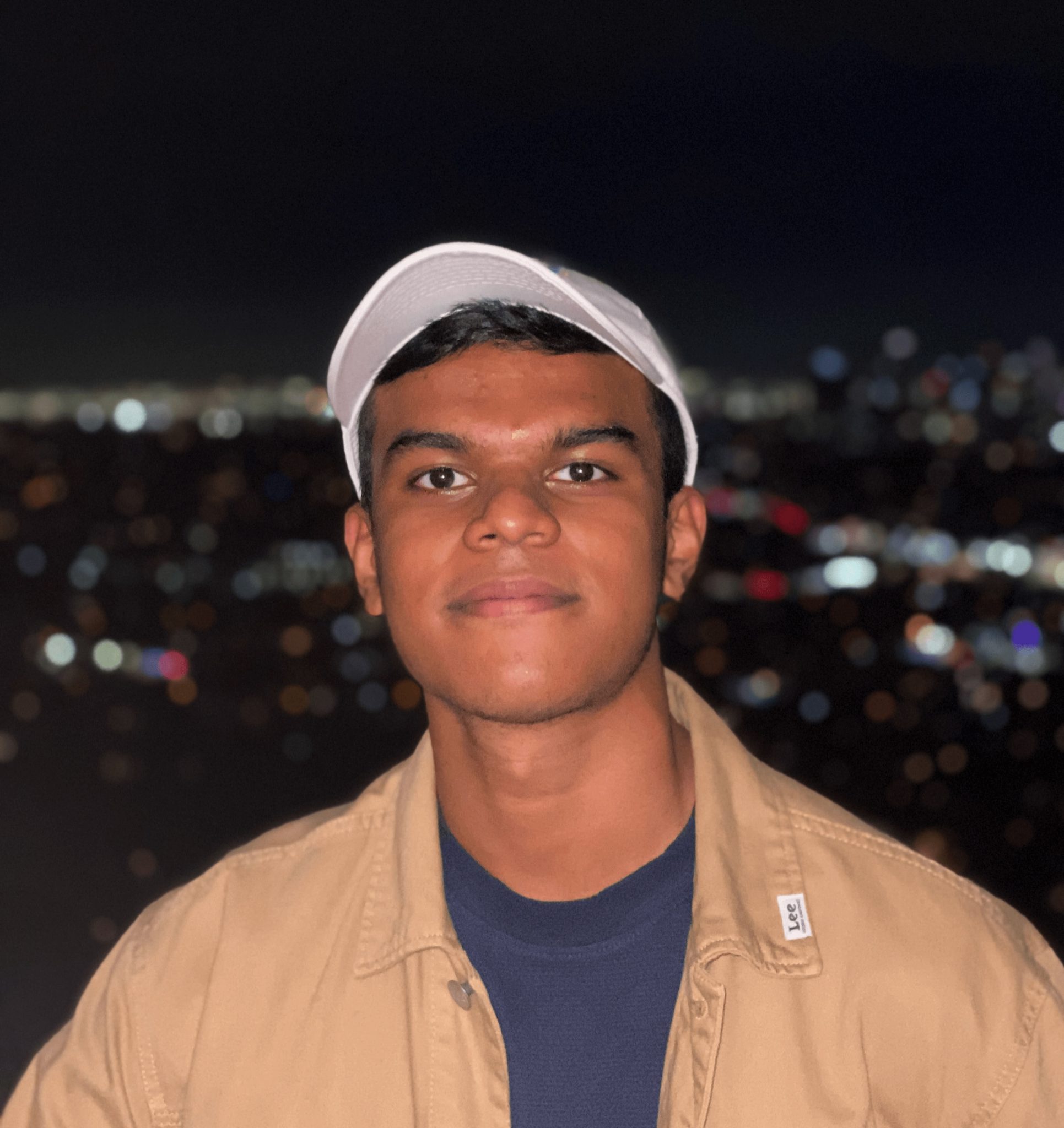
Aditya Nagachandra (2023 – 2024)
Democratizing compute resources for ML training through genetic algorithms and blockchain oracles
Mentor: Lilian Coral
Year: Sophomore
Major: Computer Science, Economics
The democratization of compute resources for machine learning (ML) training is a critical issue that restricts progress in the field. To address this issue, I propose a project that utilizes genetic algorithms and blockchain oracles to optimize ML training for complex tasks such as natural language processing and image recognition while maintaining data privacy and security. This unique approach in theory will look to democratize access to cloud resources and enable researchers from a variety of backgrounds to train models more efficiently, breaking down barriers that restrict access to ML research. The project’s benefits extend beyond the ML community, as increasing access to compute resources will lead to more efficient learning and advancements across all verticals. Our study will analyze the technical and social implications of democratizing ML training by exploring how it can increase the rate of development, reduce costs, and improve the accessibility of AI solutions for various industries. The proposed solution will enhance data privacy and security by leveraging blockchain oracles and will be evaluated through empirical studies on benchmark datasets. By democratizing access to cloud resources and improving the efficiency of ML training, our project has the potential to create a more equitable and diverse AI industry, with benefits for individuals, businesses, and society as a whole.
Results:

Laura Rossi (2023 – 2024)
Responsible Development of AI
Mentor: George Abe
Year: Senior
Major: Philosophy
With the “Godfather of AI” Geoffrey Hinton “blowing the whistle” on AI technology, and tech leaders such as Elon Musk calling for a 6-month halt to AI development, it is crucial that we look at the “profound risks to society and humanity” and figure out ways to prevent adverse consequences. There are three areas of concern. Firstly, AI is known to make stuff up and present it as real information. Secondly, dissolution of jobs being replaced by AI poses a threat to the economy. Thirdly, the consequences of AI general intelligence surpassing human intelligence are potentially devastating. On the other side of the debate, experts such as Oxford Physicist and Philosopher David Deutsch believe that AI is not a threat because it is merely an extension of us. He is more concerned by the prospect of a pause in AI development because it would mean falling behind in the “AI race.” I propose to find answers to the concerns about AI development.
Results:

Maxwell Tsao (2023 – 2024)
Enabling Zero Collateral Loans over Decentralized Systems
Mentor: Carey Nachenberg
Year: Senior
Major: Computer Science and Economics
Decentralized lending platforms enable the public to provide and receive loans without intermediaries, borders, censorship, or discrimination, which improves financial equity and efficiency. However due to the trustless nature of exchanges and consequent lack of KYC/credit, these platforms are generally collateralized protocols.
This proves to be a barrier for various applications, such as short term lines of credit. Centralized alternatives must go through intermediaries like Visa, who charge exorbitant fees to handle credit transactions. While some projects attempt to provide zero collateral loans, such as Goldfinch and Ondo, they often offset counterparty risk to off-chain assets or create risk tranches under external management, which leads to points of failure this project attempts to address.
The project investigates and attempts to implement zero collateral lending protocols, including but not limited to cooperative game theory, soulbound NFT credit systems, and off-chain proofs of identity. It will involve theoretical investigations into zero collateral systems, and analyze the possible implementation and pros/cons of each method. The success of the project would enable liquid, low fee lending systems which remove intermediaries burdening borrowers and lenders at all levels of business and personal life.
Results:
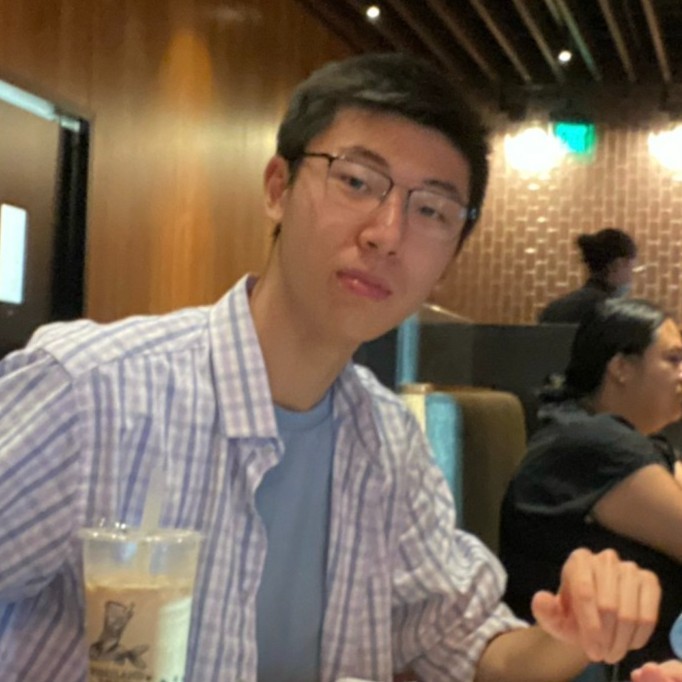
Jiahe Yan (2023 – 2024)
Bandwidth-aware distributed fast-k stochastic gradient descent
Mentor: Leonard Kleinrock
Year: Senior
Major: Computer Science
In the distributed stochastic gradient descent (SGD) problem with n workers, a main node will distribute gradient calculation to the n workers and optimize parameters after receiving results from them. Distributed SGD thus suffers from the effect of stragglers. One optimization strategy, named the fast-k algorithm, will distribute tasks to all workers and wait for only the k fastest workers before proceeding to the next iteration. However, this leads to wasted communication from the main to the stragglers. Several optimizations have been proposed to either find the k fastest workers on run-time using a Multi-Armed-Bankdit (MAB) model and distribute tasks only to these workers while gradually increasing the value for k as iteration grows or incorporating asynchronous gradient descent to avoid delaying due to stragglers. However, asynchronous SGD diminishes model accuracy significantly if stragglers respond only after several iterations of SGD, and increasing the value of k monotonically inevitably introduces stragglers as the algorithm proceeds. We introduce a communication-aware approach to distribute tasks to the k fastest workers found in run-time while incorporating asynchronous to only the k fastest workers. This allows us to adjust the value of k in both directions and avoid using straggler results from long before.
Results:
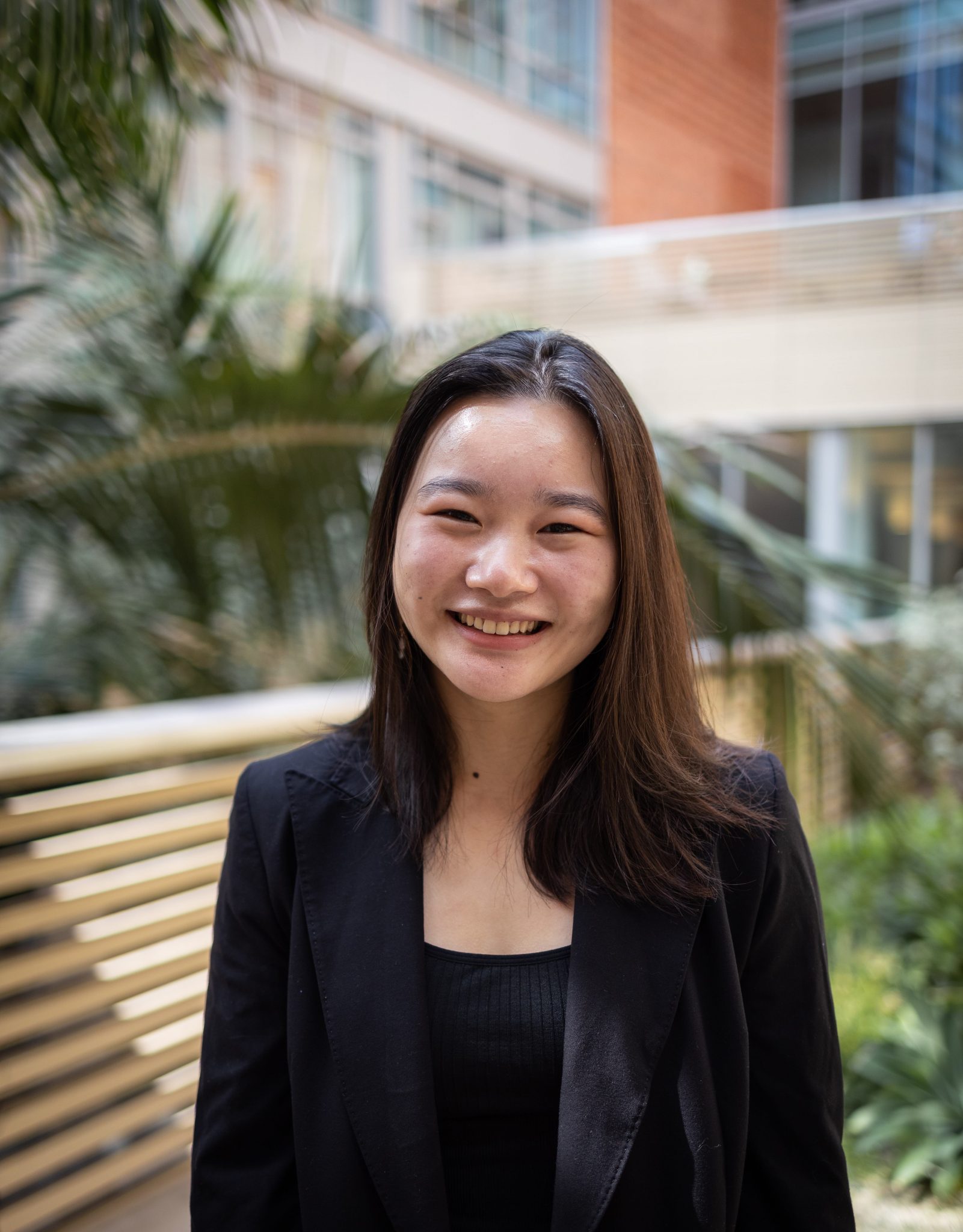
Priscilla Yang (2023 – 2024)
Harmony in Healthcare: Musical Interpretation of Patient Data
Mentor: Jeff Burke
Year: Senior
Major: Bioengineering/Geography, Environmental Science
Following the uncertainty and discrepant media coverage of scientific policies during the COVID-19 pandemic, there is a growing public distrust in science and healthcare. Current healthcare reports involve difficult-to-interpret interfaces and long pages of text, acting as a barrier to patient literacy and strong patient/healthcare professional relationships. To combat this, I propose an auditory approach to increase patient interaction with their healthcare data. More specifically, I aim to design an interface that takes values that indicate health, such as heart rate, blood pressure, and blood oxygen levels, and creates a personalized soundtrack for the patient. The unique aspect of music taps into a universal form of communication that visual cues cannot, as it overcomes the language and literacy barrier. Moreover, music has been linked to positive mental benefits, demonstrating its potential as a peaceful medium for building trust between patients and healthcare providers. With this technology, patients will obtain creative and personal interaction with their healthcare data, making them more willing to discuss results with their providers. Healthcare professionals gain an extra channel of communication for more accurate and educated care. This project demonstrates social implications to mitigate distrust in healthcare and enhance patient-to-doctor communication in the hospital.
Results:
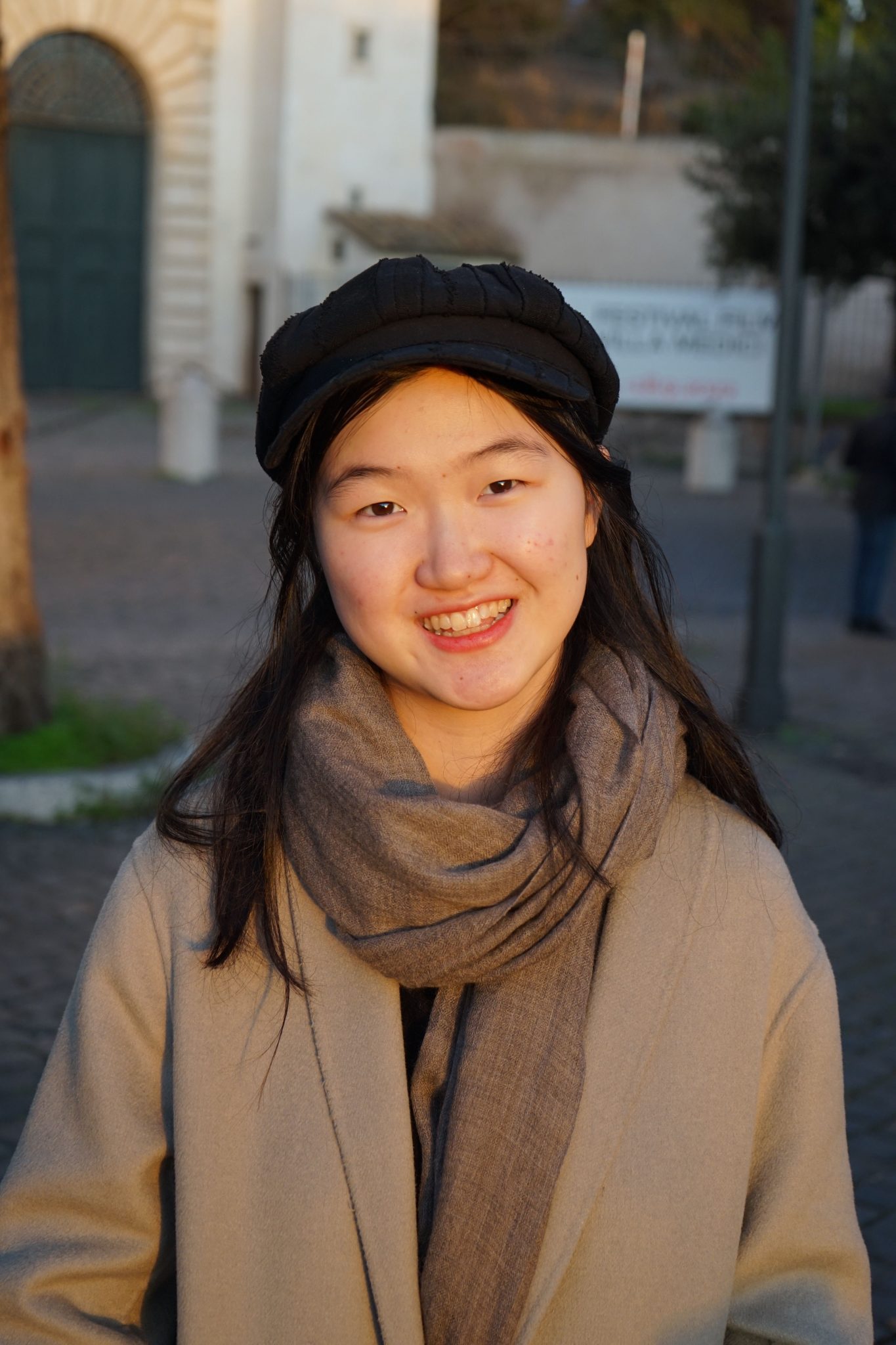
Jasmine Yu (2023 – 2024)
EEG metrics and ML model for classifying concentration and learning
Mentor: Tim Groeling
Year: Senior
Major: Computational and Systems Biology, Neuroscience Minor
Everyone gets distracted while working. We open a tab to complete an assignment and thirty minutes later we have watched five YouTube videos. Preventing distraction is challenging. A potential solution thus is to use non-invasive electroencephalogram (EEG) headsets to detect concentration levels in real-time.
However, currently there are two primary issues. Firstly, there is a lack of consensus in the literature about which EEG metrics correspond to specific types of concentration. Secondly, existing brain-computer interfaces (BCIs) can only classify a limited number of concentration states, providing limited information.
This project aims to solve these issues by defining the specific EEG metrics that relate to concentration and building a machine learning model to classify different levels and types of concentration. The first part of the project involves conducting psychophysical experiments paired with EEG sessions on human subjects to determine which EEG metrics increase or show a change in pattern during different levels of focused and distracted states. These parameters will be analyzed and weighted. The second part is an extension that involves building a machine learning model that can classify different types of concentration based on the metrics that have been identified.
The metrics can be used for future EEG and concentration clinical or research studies. Additionally, the finished model can be integrated into existing hardware headsets or a simple, viable headset built specifically for detecting concentration. This can be useful for people who want to improve their focus in school, work, or other activities.
Results:
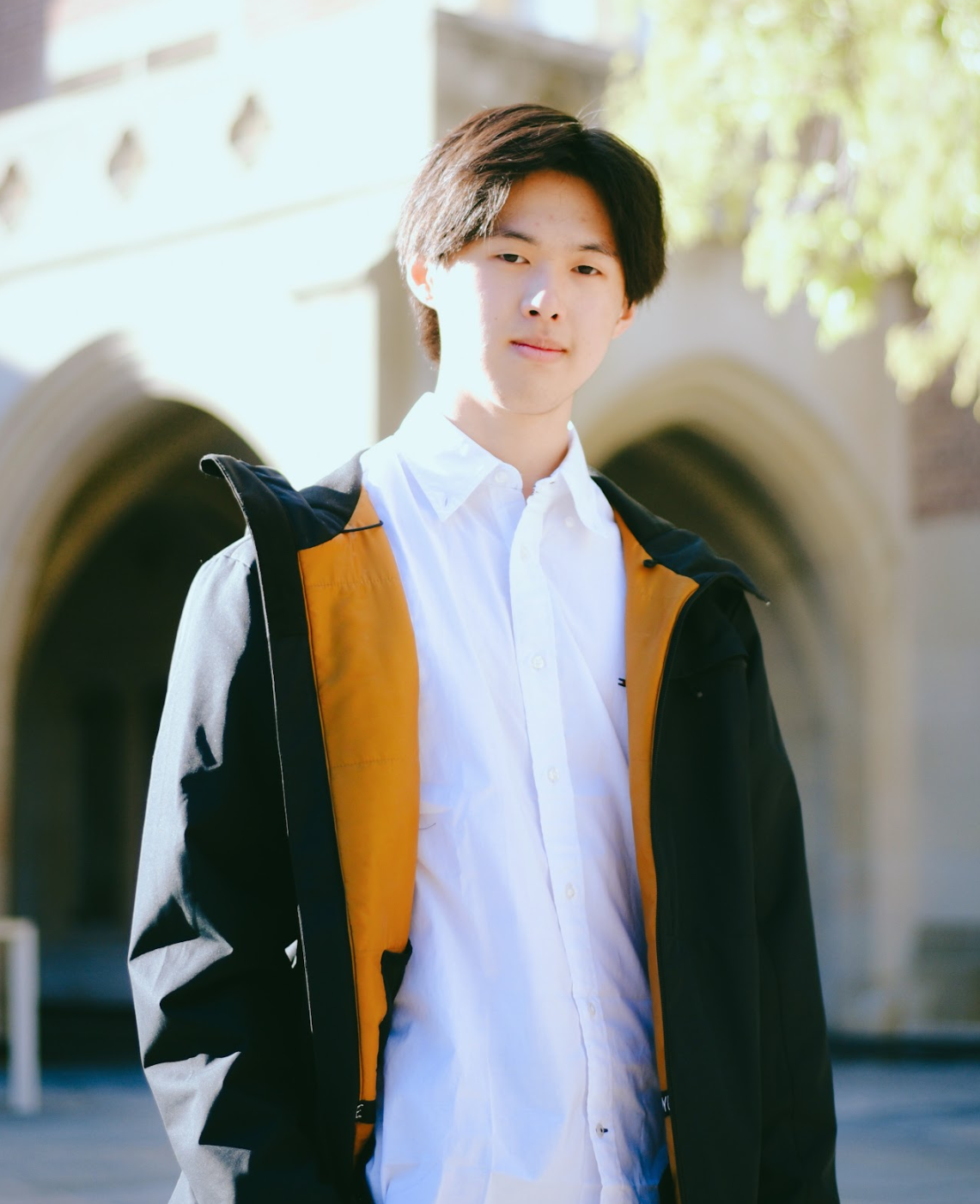
Ryan Chaiyakul
A Socratic Seminar, but Everyone is a Robot
Mentor: Rick Dale
Year: Junior
Major: Computer Engineering
From a 2024 report (datareportal.com), over 66% of all people on Earth use the internet and often do so to “[find] information”. While a global hub may suggest the prospect of unity, the internet has often served as a vessel where distrust of science, government, media, and each other fester. As manufactured text, photos, and videos become accepted as everyday obstacles, the need for common ground becomes painfully apparent. While preserving the kernels of truth is a necessary solution, it is a difficult task to make neutral and nuanced rhetoric more popular than suspect grabbing headlines on the most overstimulating platform: the internet.
Motivated by the exponential growth of LLMs, I believed that LLM agents prompted on a preprocessed blend of validated facts and suspect opinions can produce relatable yet intellectual debates on modern day events.
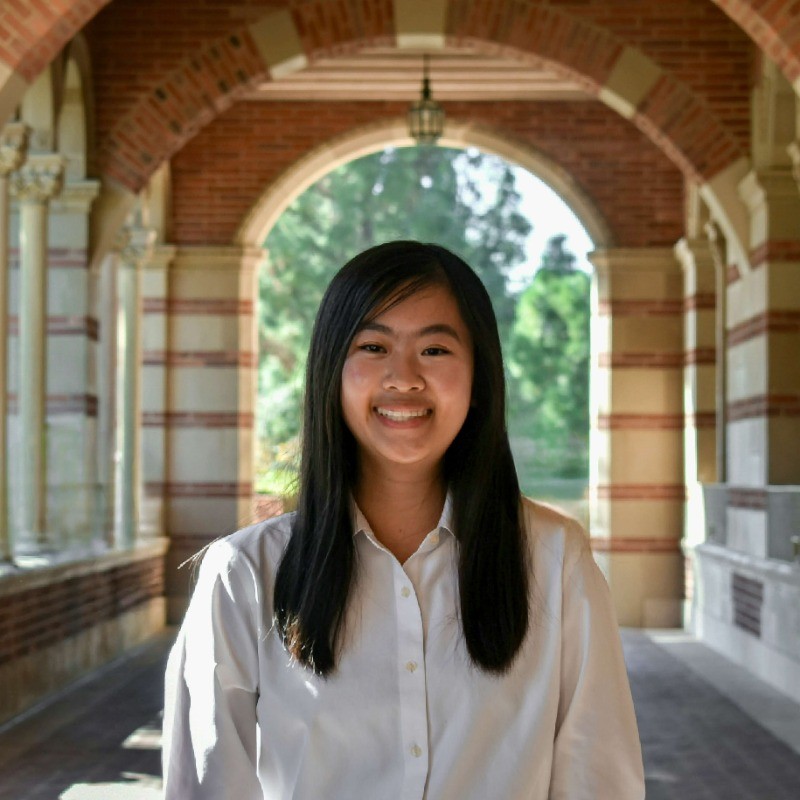
Anne Do
Educating Ethical Computer Scientists for a Sustainable Future
Mentor: Maggi Phillips
Year: Sophomore
Major: Computer Science
In an era dominated by technological advancements and ethical dilemmas, the need for computer scientists with strong ethical foundations is more pressing than ever before. However, traditional approaches to teaching computer science ethics often fall short in engaging students and fostering genuine concern for ethical issues. This project aims to address this challenge by developing an embedded ethics computer science curriculum for the Computer Science B.S. degree in the UCLA Samueli School of Engineering.
I will first develop a comparative analysis of existing embedded ethics computer science curricula in universities across the nation. Next, I explore the current state of computer science ethics education at UCLA, examining strengths and areas for improvement. Based on these findings, I will then design an embedded ethics computer science curriculum for UCLA that incorporates novel pedagogical approaches, presenting the results to relevant stakeholders for further feedback. Key questions to consider include the impact of early integration and strategies for accessibility and scalability.
My research project seeks to not only equip students with the knowledge and skills to navigate complex ethical issues in their future careers, but also empower the next generation of computer scientists to shape a more sustainable future for all.
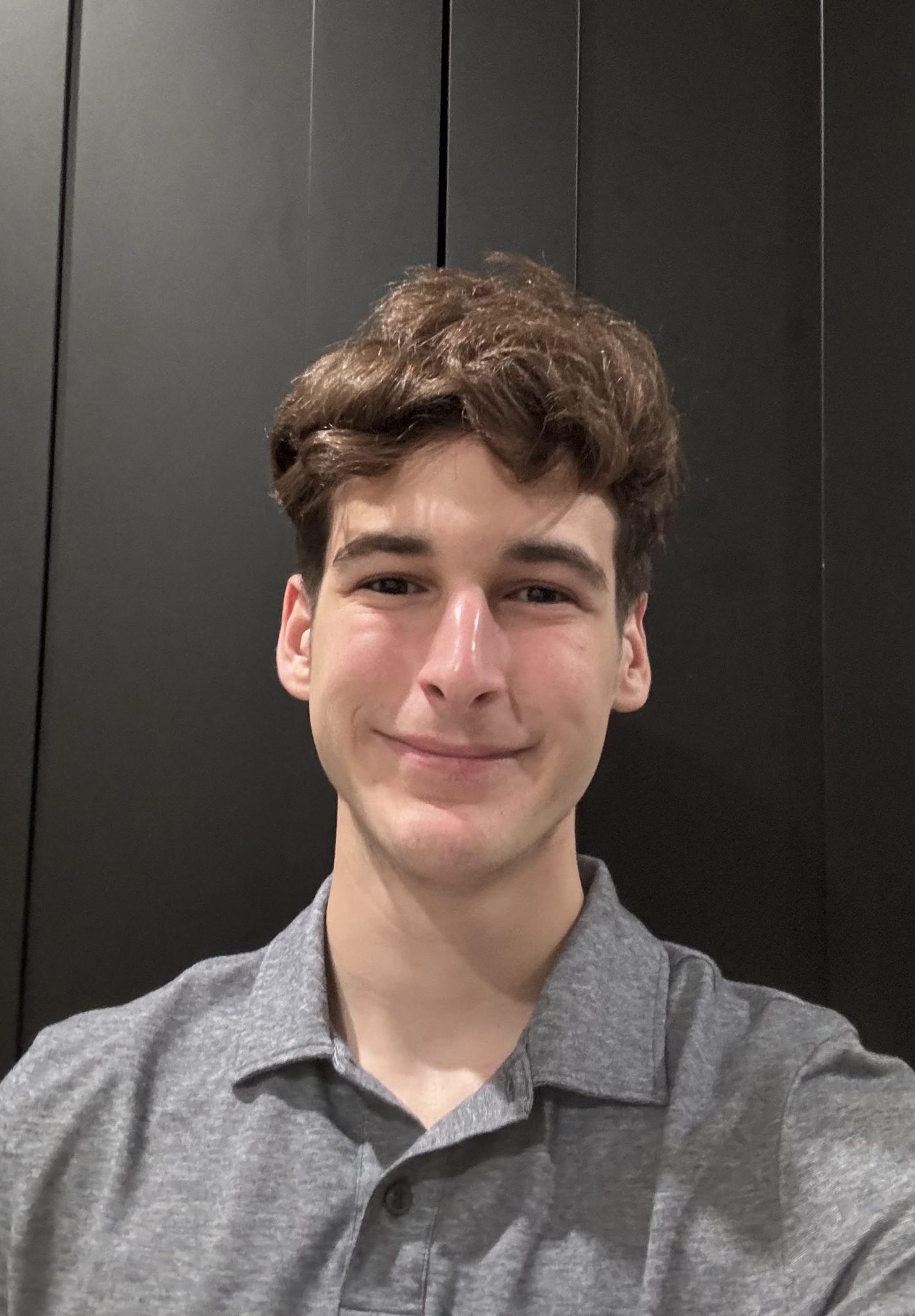
Nicholas Holmon
Implementation of “BatteryGPT:” An Artificial Intelligence Chatbot Tuned For Battery Research
Mentor: George Abe
Year: Junior
Major: Chemical Engineering
Our society is bounding towards a future dominated by artificial intelligence. Even currently, AI is exploding throughout the internet landscape with chatbots capable of voice generation, image generation, and much more. However, one remaining weakness of these chatbots lies within the field of academia. More specifically, a large majority of AI bots are limited in their ability to assist in research-related endeavors. With an almost unlimited database available, it can often be challenging for AI to pinpoint relevant information when presented with an in-depth inquiry within a complex topic. Thus, users with research-related questions are left with surface-level insight when the AI is clearly capable of a much better response. Inspired by “Potential to transform words to watts with large language models in battery research,” the goal of this project is to create, implement, and enhance a “ChatGPT” based large language model that specializes in battery research. Working within the Yuzhang Li Lab at UCLA, implementing this tool would assist newer undergraduates in their learning journey through the battery field. Furthermore, instructing the AI to provide citations would present an efficient alternative to sites such as Google Scholar, providing a direct link from a user’s question to relevant, credible information.
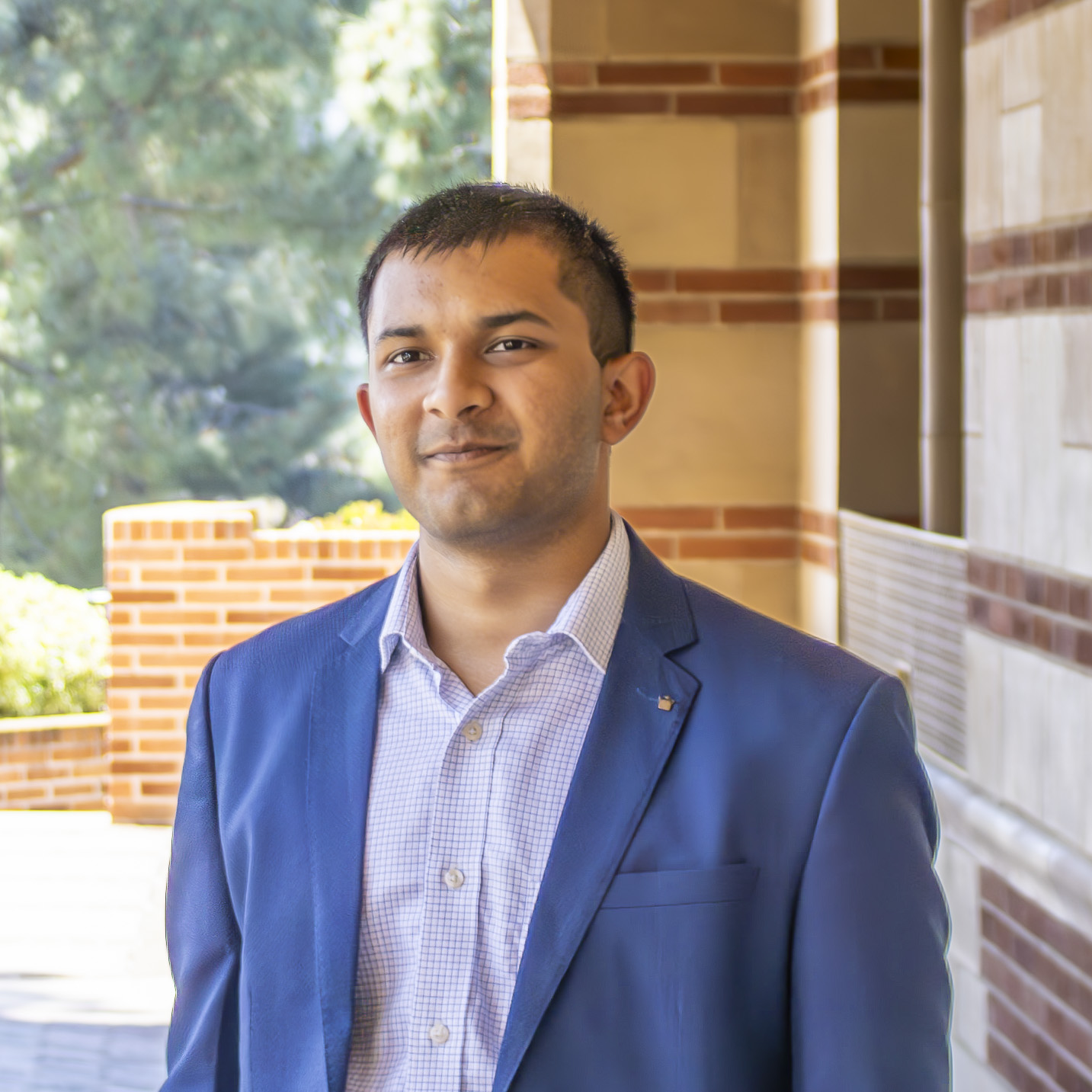
Sujay Jain
Ethical AI Model Development from Social Media-Sourced Medical Data
Mentor: Eric Haseltine
Year: Senior
Major: Computer Engineering
The proliferation of social media platforms like Twitter, Reddit, WhatsApp, and Facebook has revolutionized how healthcare professionals share medical images and patient information. These platforms facilitate collaborative diagnoses and educational outreach, and now, the data is increasingly used for artificial intelligence (AI) model development. This project explores the dual-edged sword of utilizing medical data shared on social media platforms for AI development. While these platforms offer an unprecedented volume of data, facilitating advancements in AI-driven diagnostics, they also present significant privacy, ethical, and bias challenges. By examining medical data sharing practices across different platforms, and regions, the study aims to identify biases and privileges affecting data sourcing for model development. The study also investigates biases introduced by this training, variations in consent and anonymization rules across countries, and the impact on patient privacy. The end goal is to enable AI researchers to ethically leverage social media-shared medical data for model development, resulting in an informative website and a tool for accessing crowd-sourced, high-quality medical images and information.
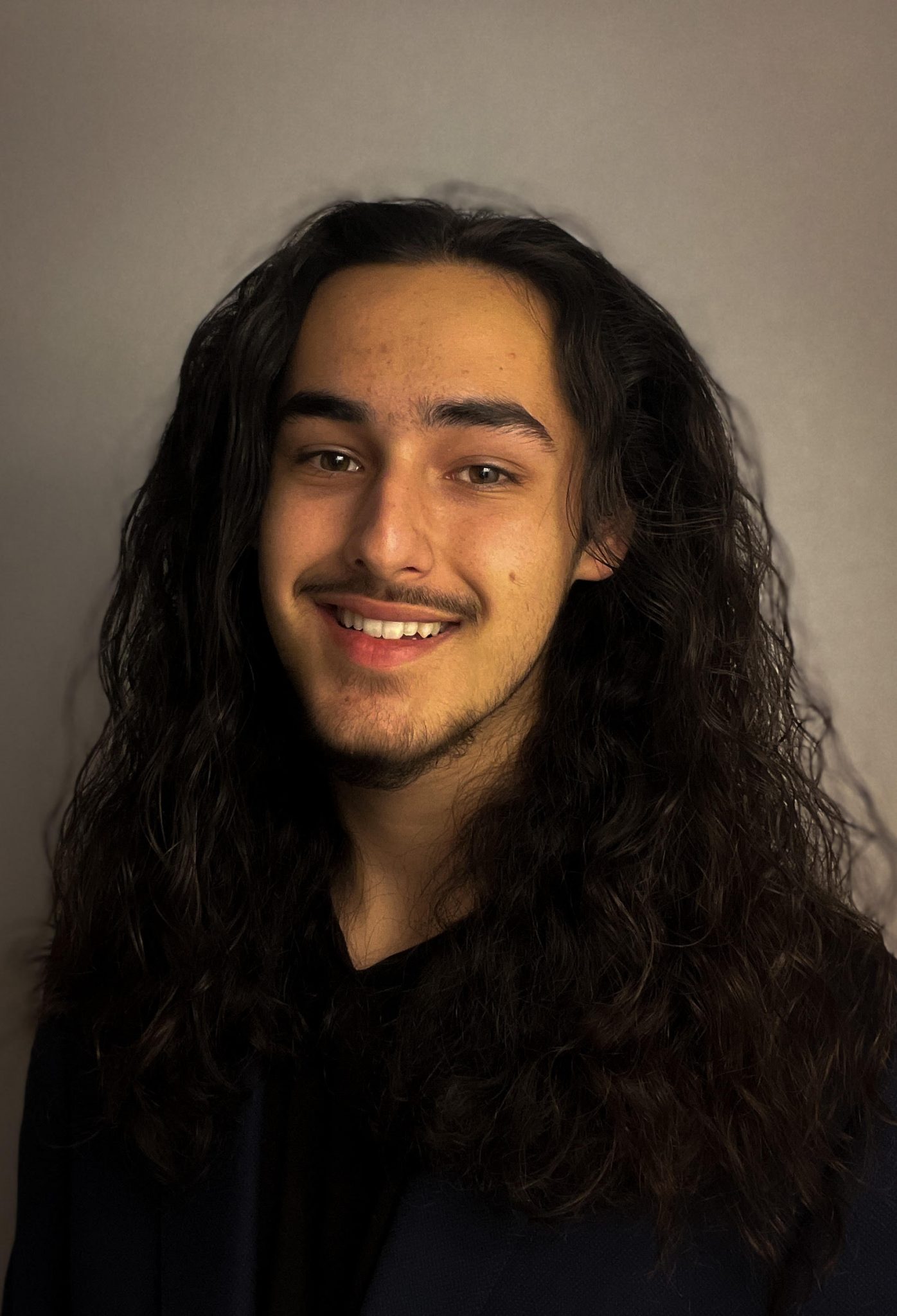
Julian Jenkins
Understanding the Environments of Successful Low Income Students
Mentor: Chris Gilbert
Year: Sophomore
Major: Education and Social Transformation + Public Affairs
What allows some students to attend college? Can those needs be met for students who don’t come from financial wealth? I know they can be met as I was raised in a “low-income, single-parent household” and was still able to attend UCLA. My question is how? What are the needs of students and how can schools and communities work to support those needs? My study aims to identify the factors in the growing-up environments of high-achieving students that allowed them to attend college. My study accomplishes this by interviewing students who received The Gates Scholarship, a scholarship for high-achieving, low-income students with an acceptance rate of less than 1%. My study uses an asset-based mindset, not focusing on the lack of financial wealth these students grew up with, but rather the things they did have that supported their journey to higher-education. This study uses mixed qualitative and quantitative methods to collect data and analyze it. My aim for this study is to inform schools on how to better support the needs of their low-income students to make higher education a possibility for more. I also aim for this study to open the door to more research on how schools and communities can best support all of their students in diverse career pathways and prevent youth from being caught in the criminal justice system.
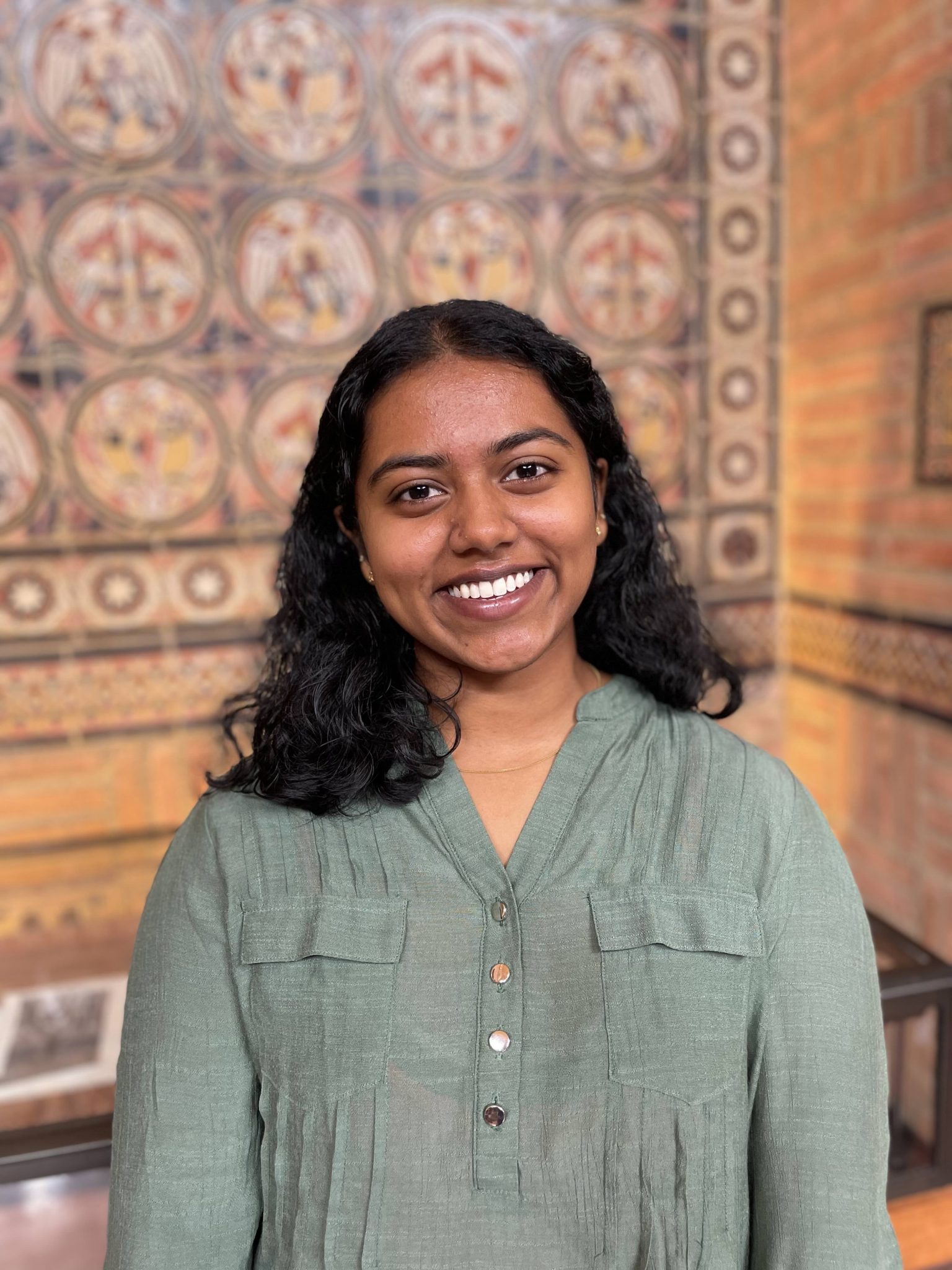
Sadhana Jeyakumar
NutriNarratives: Mapping Food Justice in South LA
Mentor: Amit Sahai
Year: Senior
Major: Human Biology & Society, Asian American Studies Minor
Food serves as a significant social determinant of health, as poor nutrition exacerbates disease vulnerability. Unfortunately, food insecurity disproportionately affects low-income minority communities in South LA who have limited access to affordable and nutritious food options.
To address the challenge of food insecurity in South LA, I aim to develop a participatory mapping tool using ArcGIS StoryMaps to spatially attribute healthy and cultural food resources, including urban gardens, farmer’s markets, and food banks. By offering affordable yet ethnic alternatives beyond traditional outlets like expensive grocery stores and fast food restaurants, this tool will help deconstruct the Western diet while improving food security. I also hope to incorporate proximity tools and transit modes using the LA County Planning database, pinpointing resources within walking or biking distances. Finally, I intend to collaborate with local organizations, like the Los Angeles Regional Food Bank, to engage residents in oral history interviews woven throughout the mapping tool to communicate community perspectives on sustainable community-owned initiatives, thus advocating for nutritional assistance grants and funding. By creating an accessible and user-friendly online mapping tool, my goal is to empower South LA residents to navigate their food landscape and call for systemic changes benefitting present and future generations.
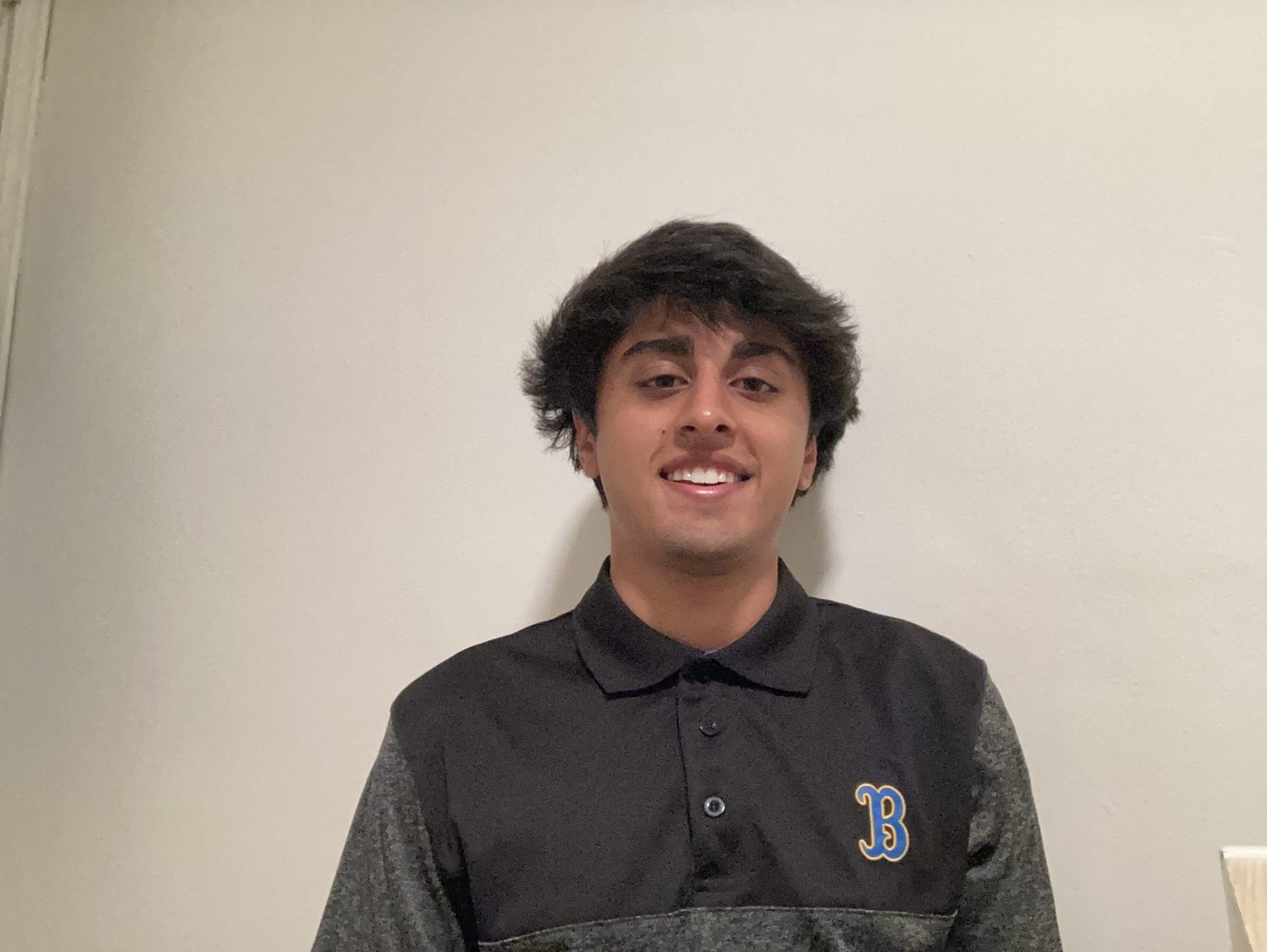
Dhruv Pareek
The Book Fund
Mentor: Leonard Kleinrock
Year: Senior
Major: Computer Science
My project is a donation platform built with Ethereum smart contracts to connect potential donors with UCLA students who want to purchase books. Anyone would be able to donate money (in the form of depositing USDC to the smart contract) and anyone would be able to request a withdrawal of funds from the platform. People will only be granted a withdrawal of funds (like being given a donation) if the smart contract can verify the user logs into to a “ucla.edu” email address and that UCLA email address was previously used to purchase books with some retailer. The smart contract would verify that the student purchased books and should be refunded by using an Oracle to check with a database that contains a purchases by users with @ucla.edu emails. Users will only be refunded up to a constant amount, maybe $50 or $75.
This idea initially creates a donor platform to connect donors with UCLA students buying books, but it can easily be expanded much wider to connect donors to other types of people purchasing other types of things. This could include other students at other colleges buying books who can be verified by their school’s email address and a database of book purchases. Or families on welfare purchasing groceries who can be verified by a welfare number and a database of grocery purchases. Smart contracts and the Ethereum network give the ability to seamlessly connect donors and potential recipients in a public and verifiable manner.
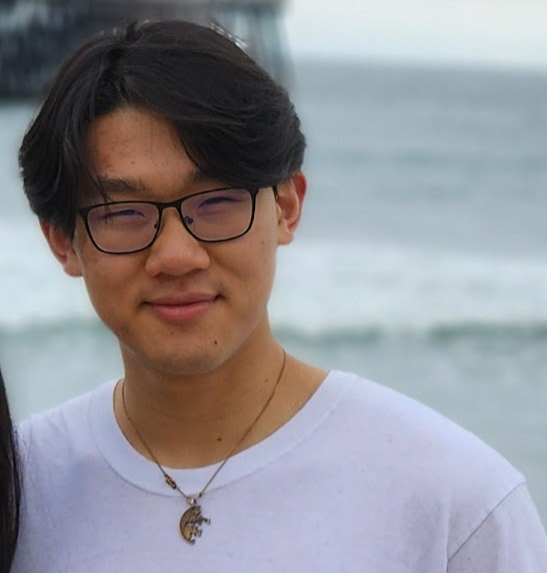
Edward Sun
Life Long Learning and Multi-Agent Intelligence
Mentor: Carey Nachenberg
Year: Sophomore
Major: Computer Science
This project aims to develop a multi-agent, goal-oriented lifelong learning framework inspired by Voyager’s innovative approach to embodied large language models (LLMs). While Voyager utilizes a single agent for continuous learning in sandbox environments like Minecraft, our framework will extend this concept to multiple agents working in parallel to solve complex problems in various real-world settings. By leveraging a goal-oriented curriculum, our system will focus on learning skills that are directly relevant to specific tasks, enhancing generalizability beyond exploratory environments.
Moreover, the framework will incorporate multimodal feedback, utilizing vision in addition to text-based feedback, to improve the agents’ understanding and interaction with their environments. A key feature of our approach is the collaborative learning process among agents, facilitated by a shared vector database where acquired skills are stored and exchanged. This collaborative multi-agent learning not only accelerates the acquisition of new skills but also enables the development of advanced collaborative capabilities. By integrating these elements, our framework will push the boundaries of lifelong learning in AI, offering a robust solution for complex, dynamic environments such as embodied home robotics, search and rescue operations, and beyond.
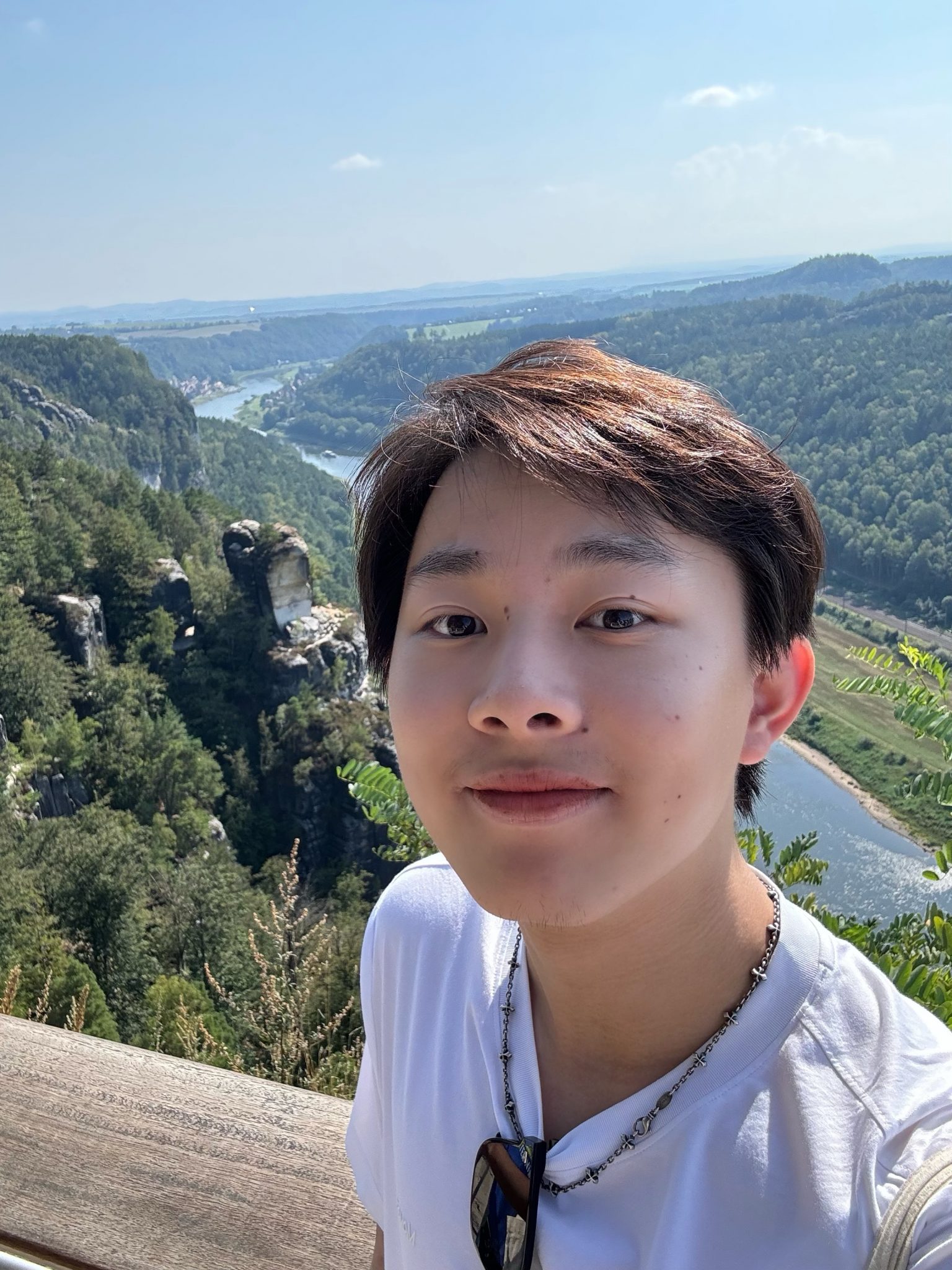
Ziyan Xie
Aletho: Where Words Connect Worlds
Mentor: Jeff Burke
Year: Junior
Major: Cognitive Science, Linguistics and Philosophy, ELTS with German Minor
Aletho is a web-based emergent poetry project designed to revive the art of “poesis”—the organic reproduction of living experiences—by enabling people to create, share, and explore poetry through a dynamic cyber interface. Amidst the swift flow of information through social media feeds and chatbots, thoughtlessness and polarization have become prevalent. Aletho aims to counteract this by providing a space where people can engage in free-form creation, self-exploration, and interpersonal communication through poetry. Participants curate a personalized lexicon from a word bank refreshed daily, craft poetry from these words, and then explore a globally interconnected hypertext of anonymously shared poems. The nontrivial effort to traverse texts and engage with diverse possible worlds encourages deep engagement. Through Aletho, the individual “A-letho” (“not forgetting” in Greek) will evolve into the collective “Aletheia” (“disclosure” in Greek), revealing shared roots of authentic human connections.
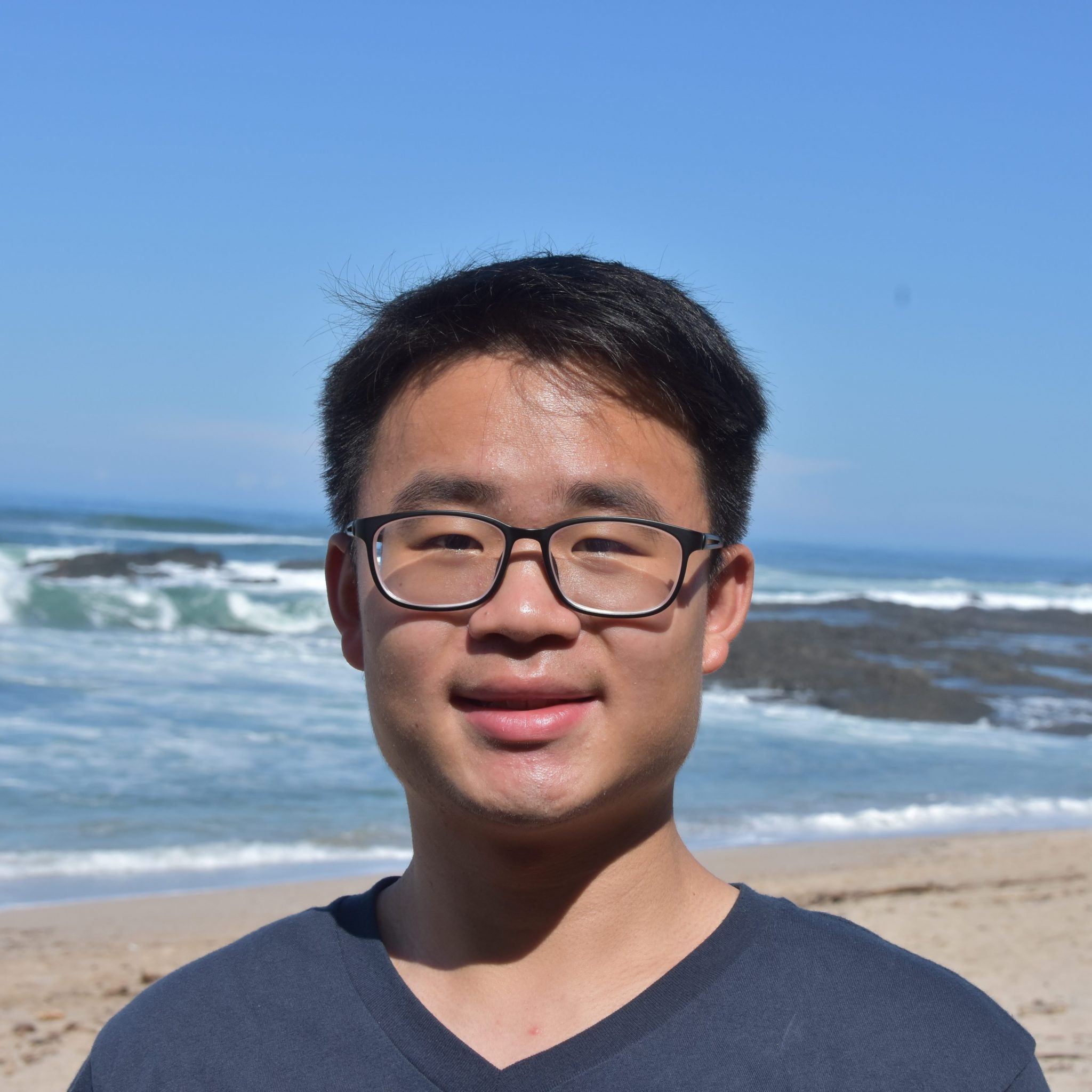
Xingjian (Harry) Zhou
Making Machine Learning Interpretable
Mentor: Venky Harinaryan
Year: Sophomore
Major: Computer Science and Engineering
The recent rapid advances in the field of machine learning has led to a pressing need for interoperability. While large language models like GPT-4 or powerful video generators like Sona have become more and more impactful on our daily lives, we humans barely know anything about the inner workings of these intelligent machines due to their enormous amount of parameters.
As a result, I’m inspired to make machine learning more interpretable to humans. Currently, I’m doing research in Professor Hsieh’s Computational Machine Learning Lab, working on a closely related field called neural network verification, which involves finding blindspots and vulnerabilities of a model. Knowing when and why a model malfunctions is a crucial step to gaining a deeper understanding of the underlying structure of a model, so I sincerely believe that I would be able to make real progress in making machine learning more interpretable.
Being able to understand these increasingly complex and powerful agents is essential to mitigate risks and biases in these models, and I hope to make meaningful contributions with this proposed project.
